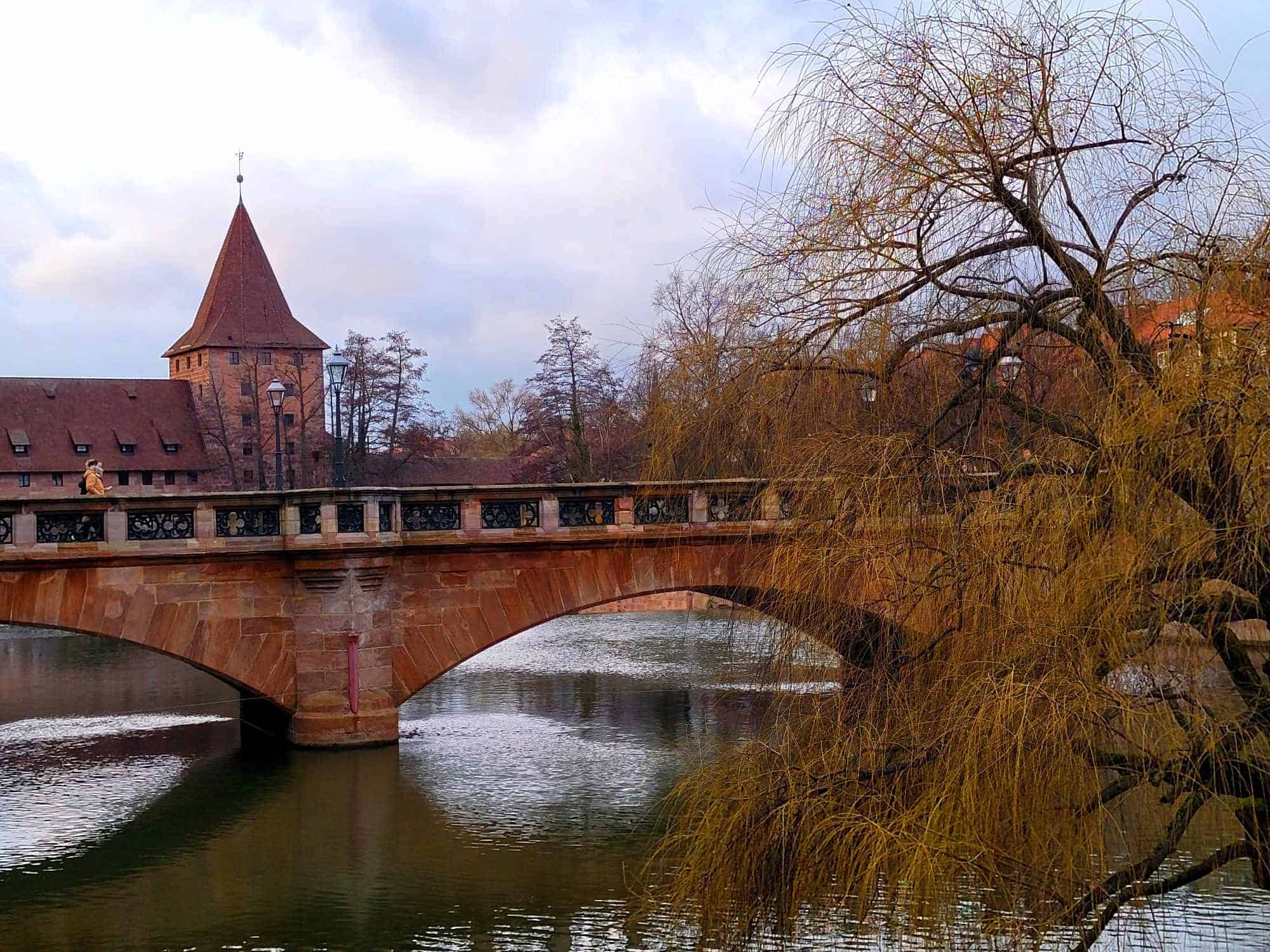This incredible, historic city in the Franconia region of Bavaria is one of my absolute favorite hidden gems in Europe. There are so many layers of history to explore and fascinating things to do in Nuremberg! It’s one of those places that keeps calling me back. I have visited on repeat, and each time I return there’s more to discover.
Nuremberg – A City of Light and Darkness
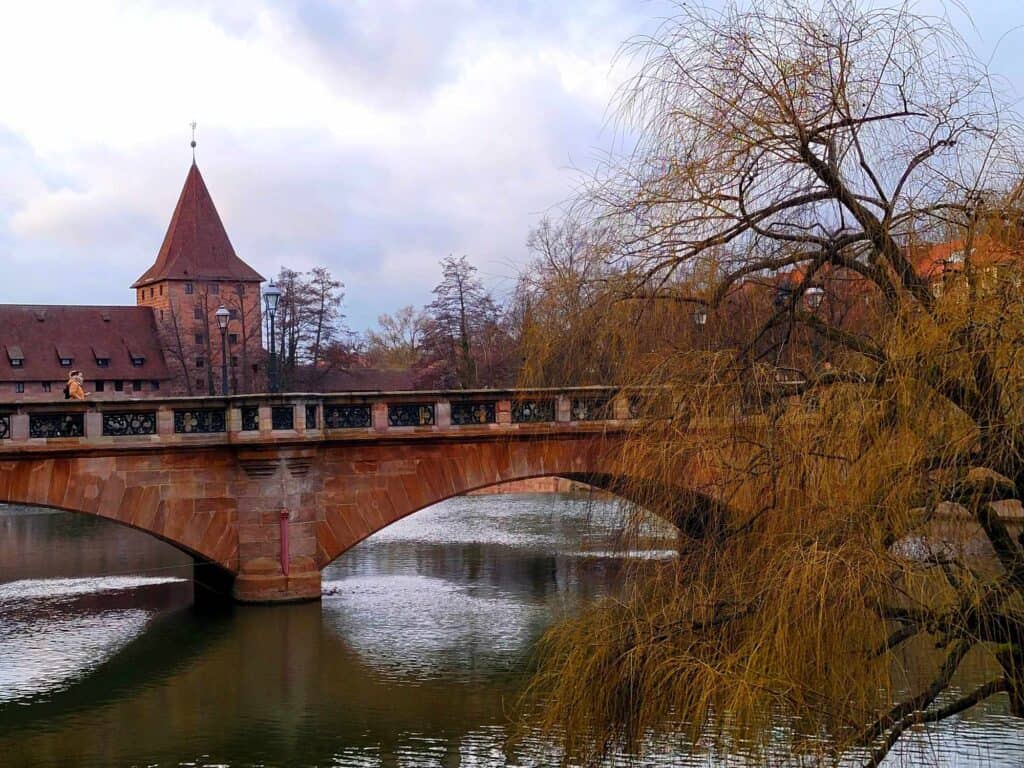
Nuremberg (Nürnberg) has been a center of artistic brilliance, craftsmanship and trade and, at times, a witness to history’s darkest moments. Once the heart of the Holy Roman Empire, it later became infamous for its role in WWII. Today, Nuremberg is both a beautifully preserved medieval city and a profound place of remembrance, with unique and powerful sites that honor its past.
But what truly makes Nuremberg special is the experience of exploring it. From medieval streets to world-class museums, historical sites, amazing local food, and surprises around every corner, there’s never a dull moment!
Best Things to Do in Nuremberg
If you’re planning a trip, here are the absolute best things to do in Nuremberg—from iconic landmarks to hidden gems. 💎
1) Explore the Nuremberg Castle Complex (Kaiserburg Nürnberg)
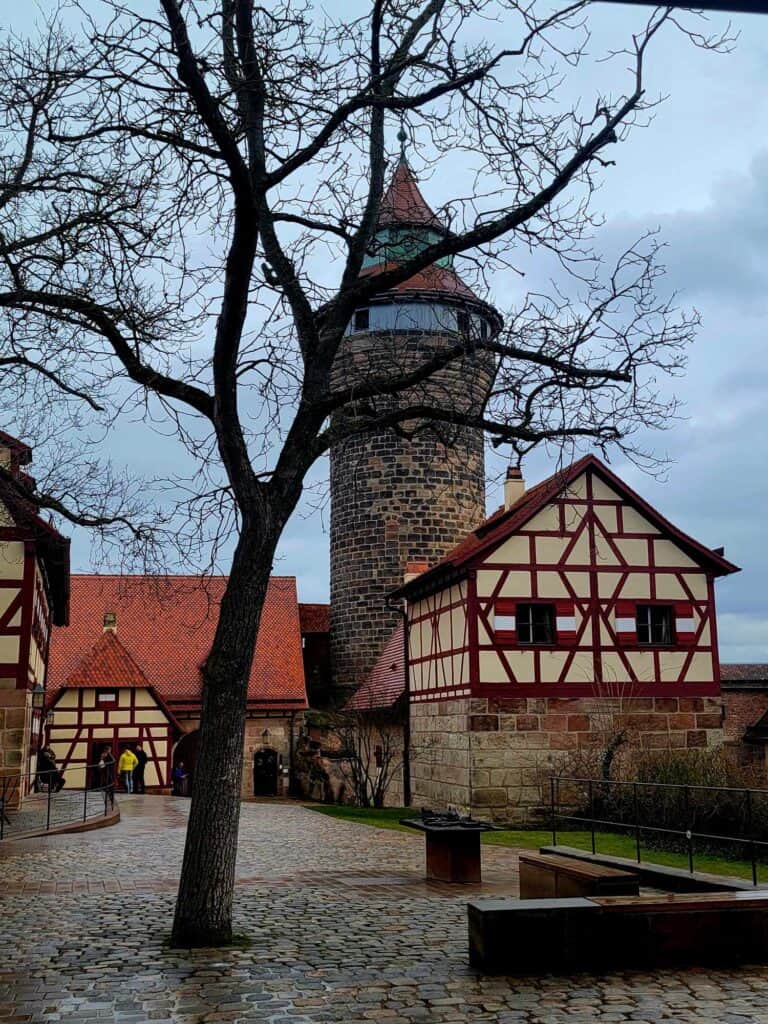
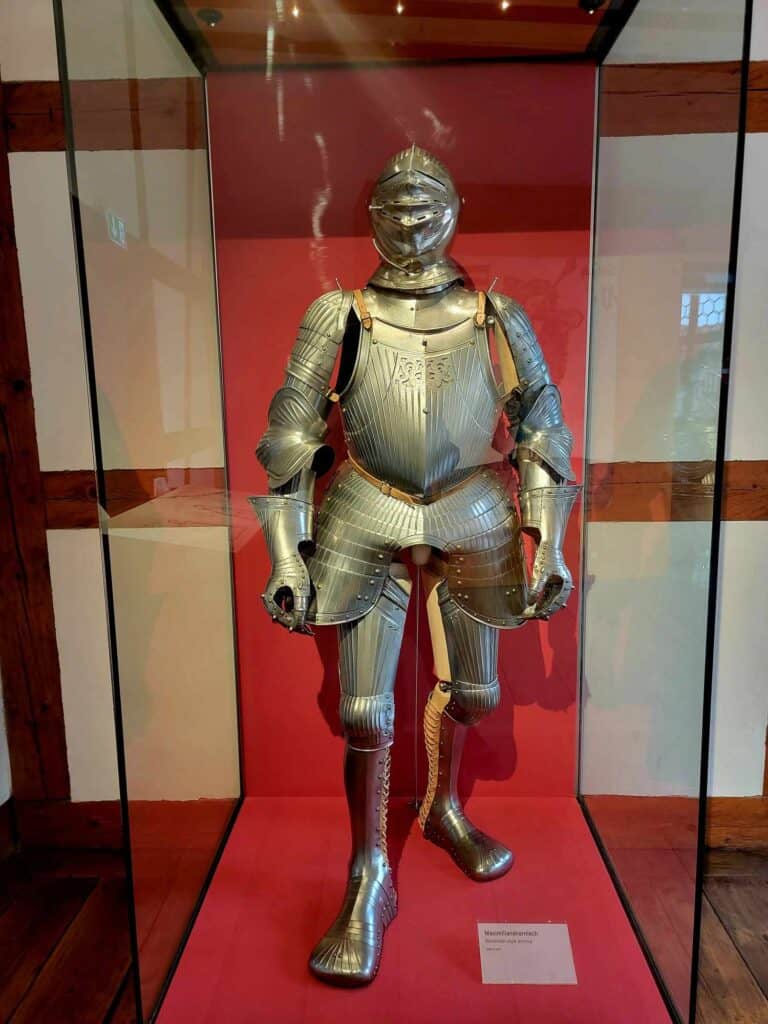
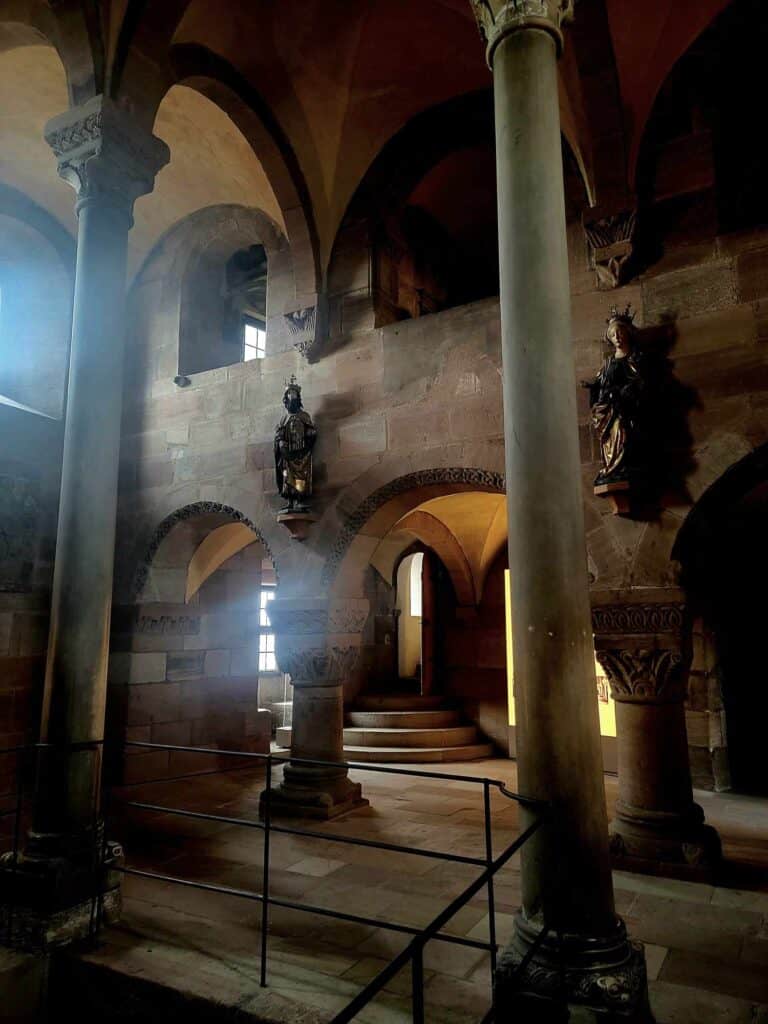
Want to step inside one of Europe’s most powerful and significant medieval fortresses? The Nuremberg Castle complex is a portal that takes you through 900 years of history. It even served as temporary residence for a whole host of Holy Roman Emperors!
What You’ll Find in the Nuremberg Castle Complex
🛡️ The Kaiserburg Museum
The Kaiserburg Museum is housed in the castle itself, and gives a great overview of medieval life, the Holy Roman Empire, and Nuremberg’s historical importance.
For more details be sure to read: Your Ultimate Guide for Visiting Nuremberg Castle: History, Tips, and Must-Sees
Most notable are an impressive collection of armor and weapons, globes and scientific instruments, and castle artifacts including a fabulous oak door from the 16th century. You’ll also be able to see the parts of the original castle that survived the bombing.
💧 The Deep Well (Tiefe Brunnen)
This 14th century well provided the water supply for the castle when it was under seige and has a fascinating history. You can learn about it from an English-speaking guide and see a couple interesting demonstrations of its depth
🏰 Sinwell Tower (Sinwellturm)
This former observation and defensive tower is a bit of a climb, but when I got to the top I couldn’t believe the view. It really gave me a whoe new perspective of the city, and there was a great historical display with before and after photos of the war damage so you can compare what your are seeing now with how it looked then. Definitely worth it!
Nuremberg Castle Visiting Information
🕒 Opening Hours
- April–September: 9 AM – 6 PM, and October–March: 10 AM – 4 PM
- Closed on: December 24th and 31st
🎟️ Ticket Prices
- Castle + Museum + Tower: €7.00
- Reduced (students, seniors): €6.00
- Family Ticket: €15.00
♿ Accessibility
Not all areas are wheelchair accessible, but the official website of the castle has a great page explaining accessibility to all areas of the castle complex.
Explore Nuremberg Castle’s Secret Tunnels & Hidden Passages
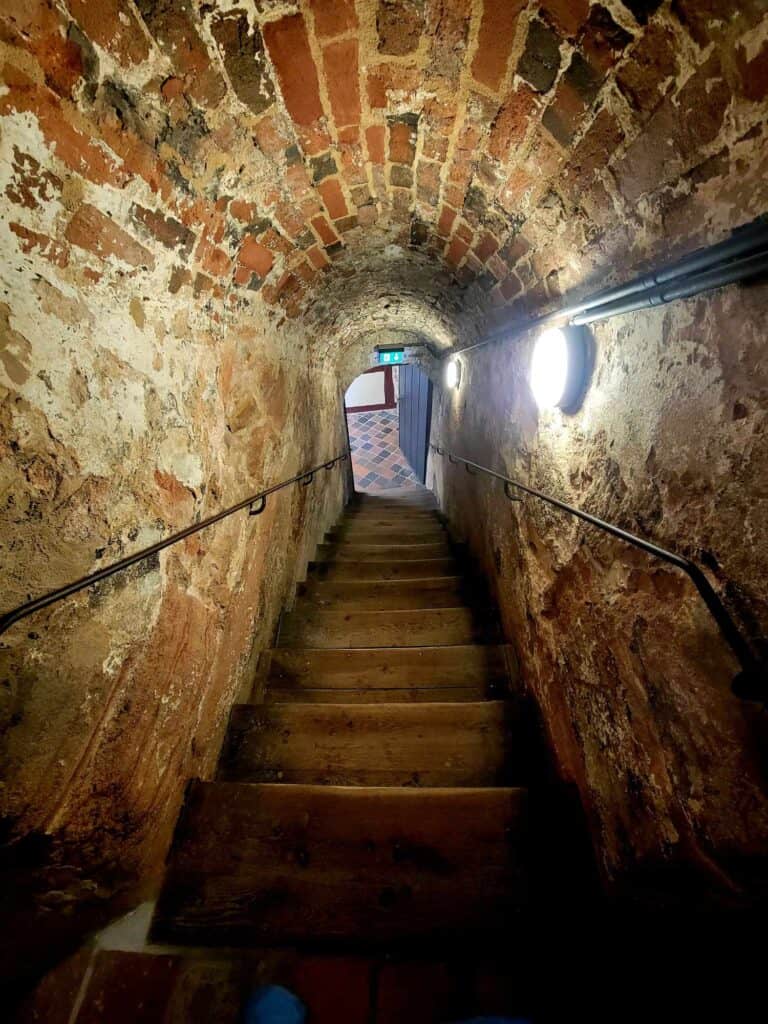
But wait! Beyond the grand halls and towers, there’s a hidden gem in Nuremberg Castle that many visitors miss—the underground tunnels inside its walls.
This tour is not included when you buy your tickets. It takes you inside the casements of the castle (inside its walls!) It’s a fascinating historical tour and not something I’ve seen anywhere else.
Tunnels and Secret Passages Tour Information (German & English)
🕰️ Duration: About 1 hour
🎟️ Price: €11 per person
📍Meeting place: In front of the entrance of the Historischer Kunstbunker, Obere Schmiedgasse 52. Use this map of the tour location to find the meeting point.
💡 Pro Tip: The English tour is likely to sell out ahead of time, so be sure to get your English tour tickets in advance!
2) Visit the Albrecht Dürer House Museum (Albrecht-Dürer-Haus)

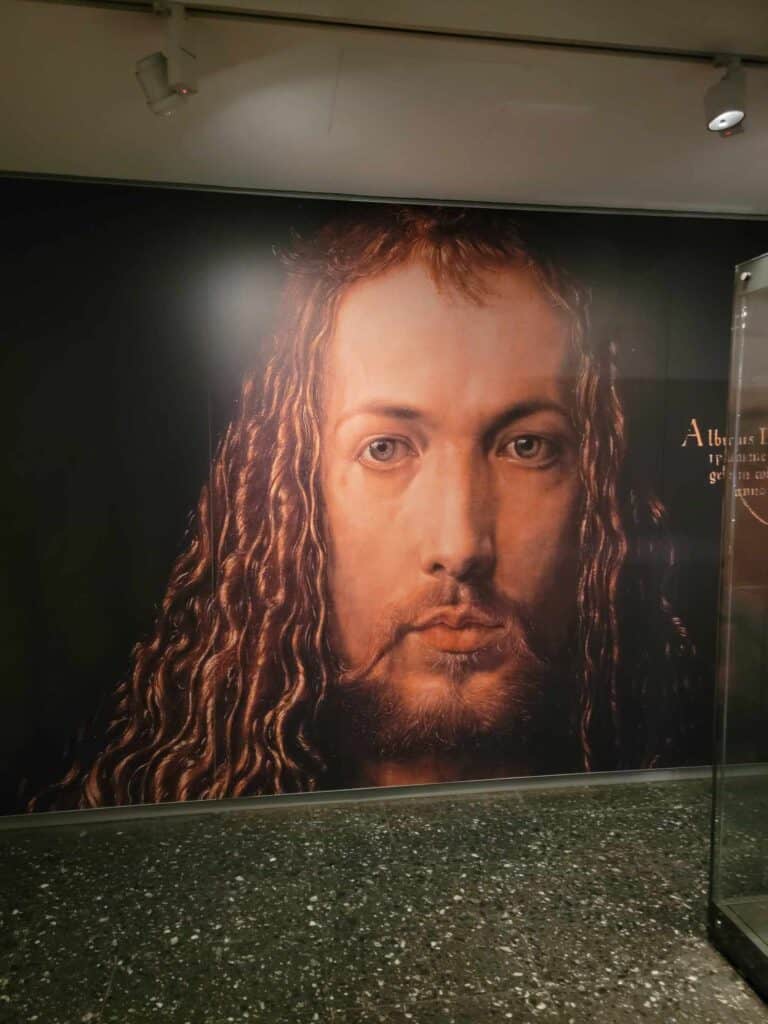
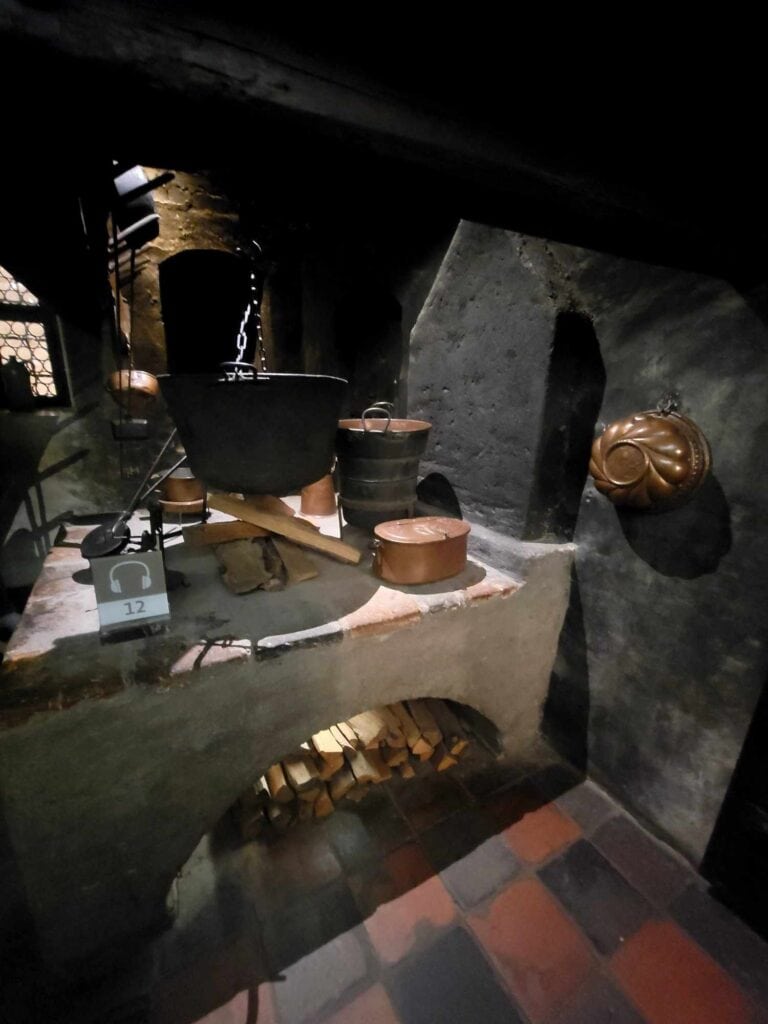
History and Significance
If you’re an art history nerd, a stop at the former home of one of the masters of the Renaissance is mandatory. And the fact that Albrecht Dürer’s house was one of the very few buildings in Nuremberg’s Old Town to have survived the devastating bombing raids virtually unharmed is such an extraordinary piece of luck!
Albrecht Dürer worked and lived in this very house with his wife Agnes, and his mother Barbara, from 1509 until his death in 1528.
When I came to Nuremberg, I looked for a tour that would take me to all of the Albrecht Dürer sites in the city, but there was nothing!
So, I made one myself. If you want to go on my self-guided Albrecht Dürer tour to see his birthplace, his art, his house, tributes to him, his stained glass, and even his burial site, check out: 10 Best Albrecht Dürer Sites in Nuremberg: A Guide to His Legacy
Visiting Information for Albrecht Dürer House Museum
Opening Hours:
- Tuesday to Friday: 10:00 AM – 5:00 PM
- Saturday and Sunday: 10:00 AM – 6:00 PM
- July through September and during the Christmas Market in December, the museum is also open on Monday 10:00 AM – 5:00 PM
Admission Prices (including an audioguide):
- Adults (18+): €7.50
- 4-18 years old, students: €2.50
- With Nuremberg Pass: €2.00
3) Immerse Yourself in Nuremberg’s Historic St. Sebaldus Church (Sebalduskirche)
Winklerstraße 26, 90403 Nürnberg
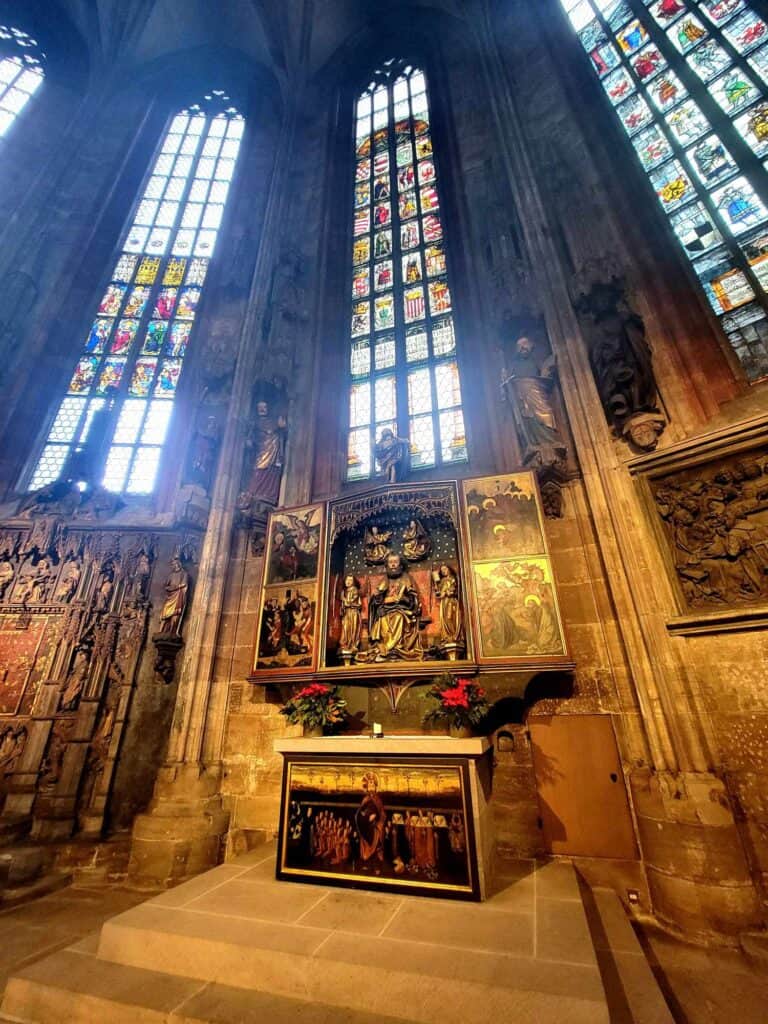
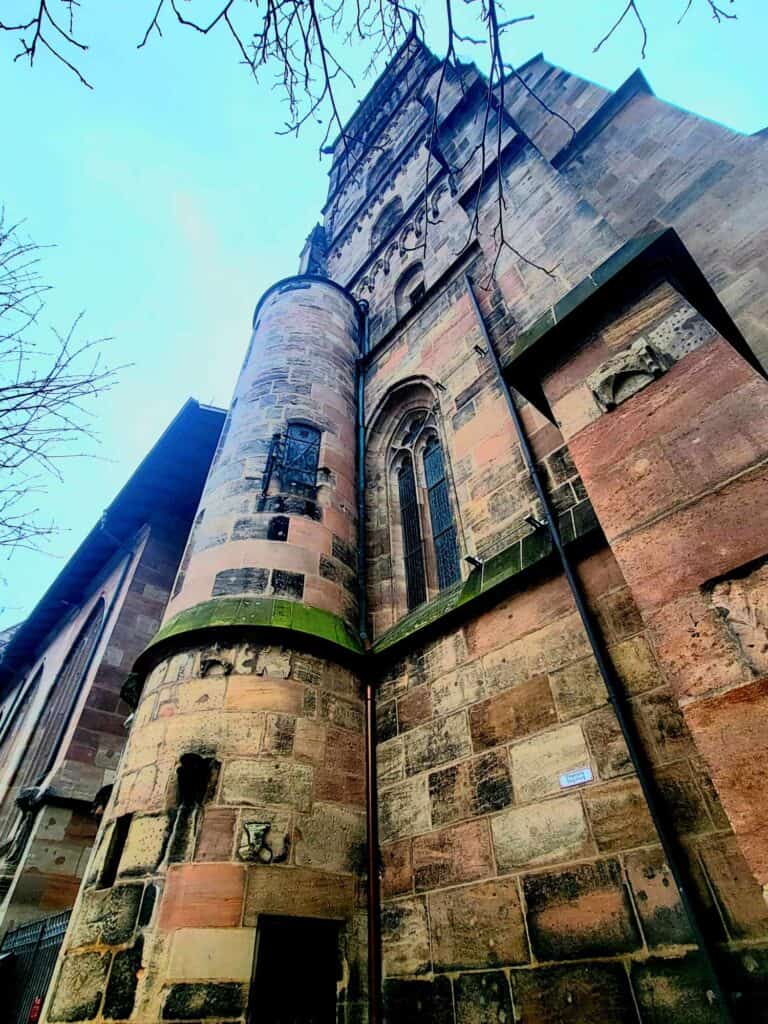
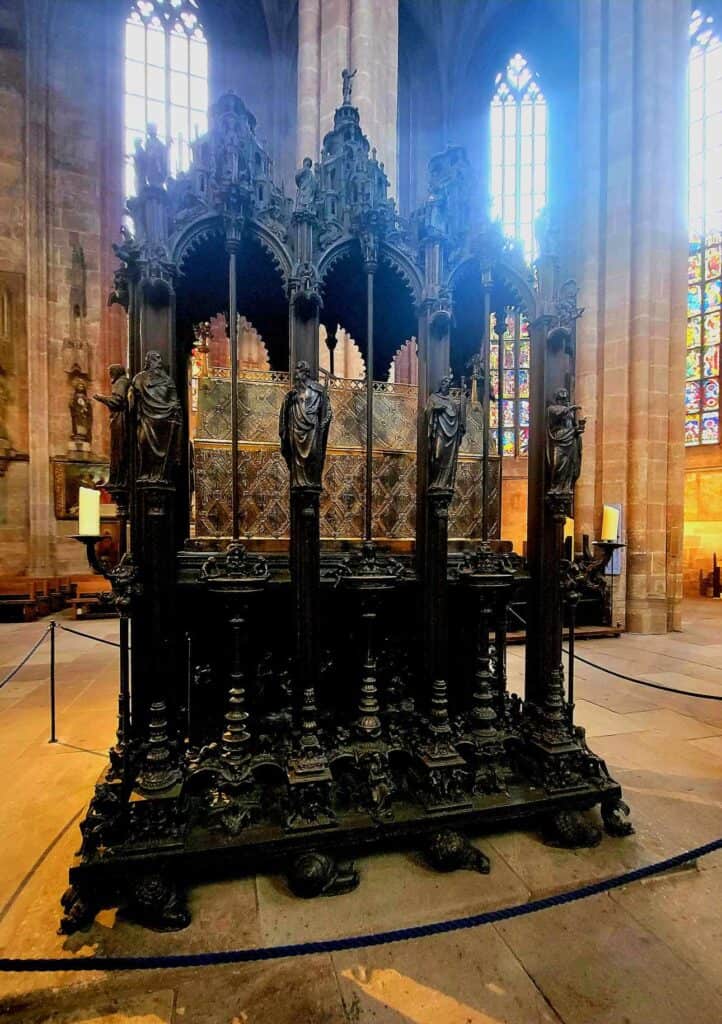
St. Sebaldus Church sits right in the heart of Nuremberg’s Old Town, and is one of the oldest and most significant churches in the city. Founded in the 13th century, it was named after St. Sebald, the city’s patron saint.
It was my first stop on my first trip to Nuremberg, and I will always have a soft spot for it because I wasn’t expecting there would be so much history, and connections with a world-renowned artist, and composer!
Protestant Church That Looks Catholic
During the Reformation, when Martin Luther separated from the Catholic church, St. Sebaldus became a Protestant church. You wouldn’t know it to look at the inside because most of the ornate medieval Catholic art and iconography is still there! Nuremberg was more moderate in its views during the Reformation, and refused to destroy its religious art, as often happened in other areas of Germany where Protestant churches reflected simplicity and lack of adornment.
This is good news for us because the interior is truly lovely, filled with breathtaking medieval art!
Find the Snails!
The shrine to St. Sebaldus, a magnificent bronze tomb from the early 16th century remains intact as well. One of the more unusual and frankly adorable elements in the church are the bronze snail sculptures that act as feet, holding up the shrine. I may or may not have said, “Snails!” louder than I should have.
Snails aren’t very common in religious architecture, but they are believed to represent patience, and the slow steady journey of faith. Whatever the reason, they are now a beloved curiosity and unofficial mascots of the church, even represented in its logo!
The Albrecht Dürer Windows
The thing you will probably notice first are its stained-glass windows, some of which were designed by Albrecht Dürer, Nuremberg’s most famous Renaissance artist – and I would argue the greatest artist in German history. You’ll find these in the east choir (back left as you enter)
Though some of the original medieval windows were damaged or destroyed, many have been preserved, and others carefully reconstructed.
The Pachelbel Connection
St. Sebaldus has another famous figure of the arts associated with it, the Baroque composer Johann Pachelbel, best known for his composition Canon in D. Chances are if you’ve attended a wedding or two, you’ll know this piece (even if you don’t know it by name).
Pachelbel was born in Nuremberg in 1653 and was actually the church’s organist from 1695 to 1706! The church’s grand organ was rebuilt after WWII, carrying on its musical tradition and history. Here’s a link to Pachelbel’s Canon in D played on instruments that would have been used at the time it was written.
World War II Damage & Reconstruction

Like much of Nuremberg, St. Sebaldus (you can see its two ruined towers in the distance on the right in the photo above) was heavily damaged during Allied bombings in 1943–1945. The roof collapsed, and much of its medieval structure suffered severe destruction. After the war, meticulous reconstruction took place between 1945 and 1957, using original stones wherever possible. You’d never know to look at it today.
Visiting Information for St. Sebaldus Church:
🕒 The church is open Monday – Saturday 9:30am-4:00pm, and Sunday from 11am-4:00pm
🪙 Donations are requested, but not mandatory.
💡 Pro Tip: After your visit to this historical church, pop across the street where you’ll find several amazing antique shops to browse!
4) Find the Moritzkapelle (St. Maurice Chapel) – the Lost Chapel of Nuremberg
Unfortunately, despite Nuremberg’s diligent efforts to reconstruct the Old Town after the war, there were still casualties that were never reconstructed. One of these is the Moritzkapelle which used to stand right next to St. Sebaldus.
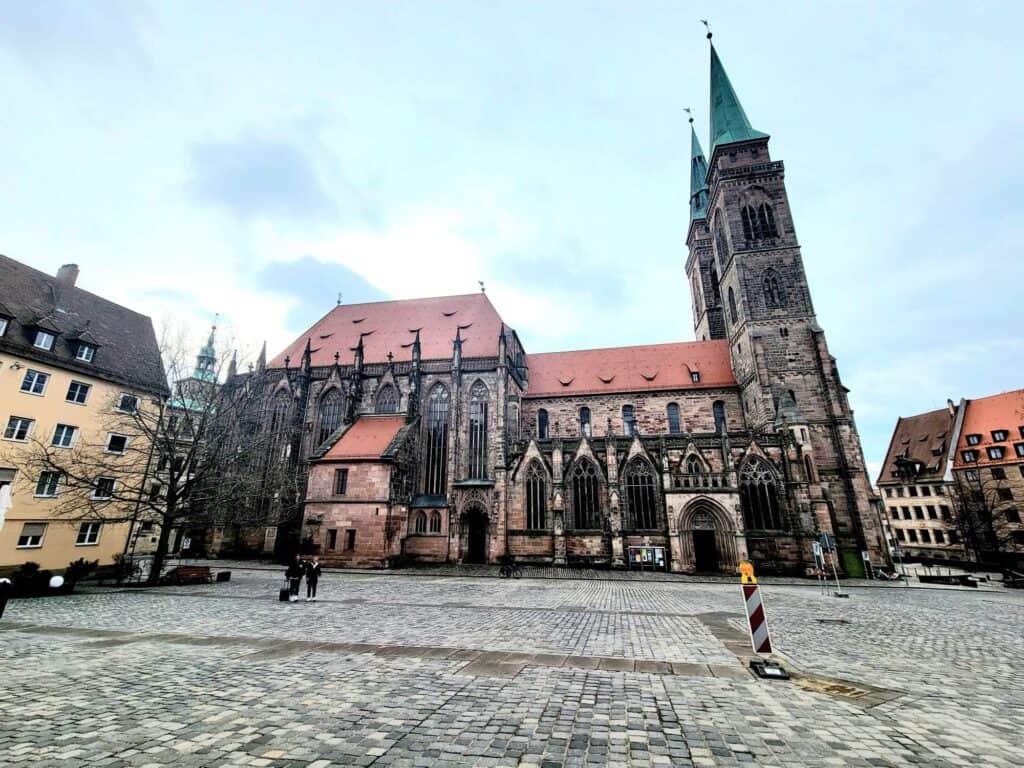
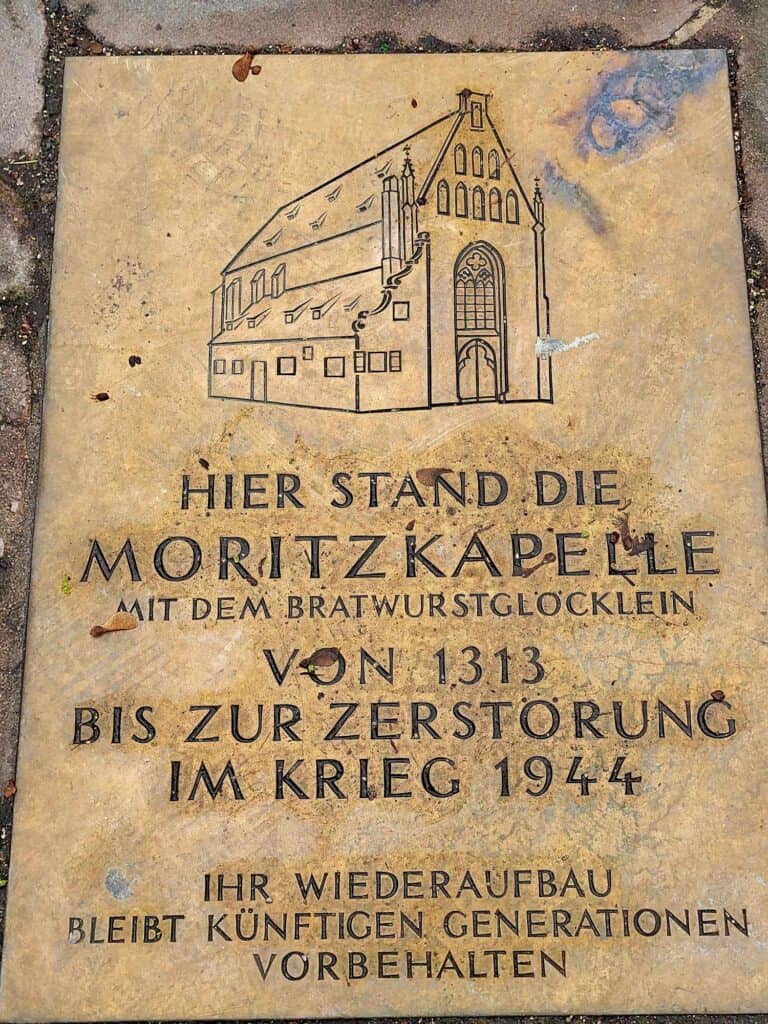
Construction
The Moritzkapelle, or St. Maurice Chapel, was built in 1313 and was originally part of the St. Sebaldus Monastery complex. The chapel was dedicated to St. Maurice, the patron saint of soldiers.
Destruction During World War II
The Moritzkapelle was unfortunately caught in the bombing raids that targeted infrastructure in the city and was reduced to ruins. The huge reconstruction projects and the economic hardship that Nuremberg faced after the war, and the decision of the urban planners to leave the square next to Sebaldus open meant that Moritzkapelle had met its end.
Hiding in Plain Sight
The chapel may be gone, but its ghostly outline remains. I almost missed it but I noticed a line of dark cobblestones that looked very purposeful, and sure enough after looking around a little bit, there it was!
You can still see the outline where it stood, laid out in dark cobblestones in the square, so you can imagine what it must have been like. There is also a small plaque commemorating the site, explaining about this bit of hidden history.
It made me a little sad, and I tried to picture from the image on the plaque what it must have looked like, and about the difficult decision to let it remain a phantom.
5) Explore Nuremberg’s Medieval Dungeons: A Dark History Below Town Hall (Lochgefängnisse)

Located in the vaulted cellars underneath the Historic City Hall, you’ll find the medieval dungeons once used for housing prisoners from the time of their arrest, until their sentences were carried out. These dungeons are creepy and feature torture devices, and a guide to explain it all.
These dungeons are particularly horrifying when you find out that the prisoners had to spend their entire time until sentencing in complete darkness.
Torture was common as a means of extracting information, and wasn’t outlawed until 1814! To add insult to injury, prisoners had to pay for their own “room and board,” with wealthier prisoners being able to afford slightly better conditions.
If you’re looking for a spine-chilling immersion into the dark side of criminal justice in the middle ages, this one is for you! Children under 10 are not permitted on the tour.
Visiting Information for the Medieval Dungeons
🚧 Visitation is permitted only with a guided tour, and no one under the age of 10 will be admitted
🇩🇪 Guided German Tours: daily, every hour from 11 am to 6 pm
🇬🇧 Guided English Tours: daily 3.15 pm, 4.15 pm, 5.15 pm
💶 Adults €10.00, Adults with Nürnberg Card €5.00, Students €8.00
💡 Pro-Tip: After your tour, visit the Hangman’s Bridge and the Hangman’s House (next) to learn about the executioners who enforced these punishments.
6) Cross the Hangman’s Bridge (Henkerbrücke): A Bridge with a Dark Past
Trödelmarkt 58, 90403 Nürnberg
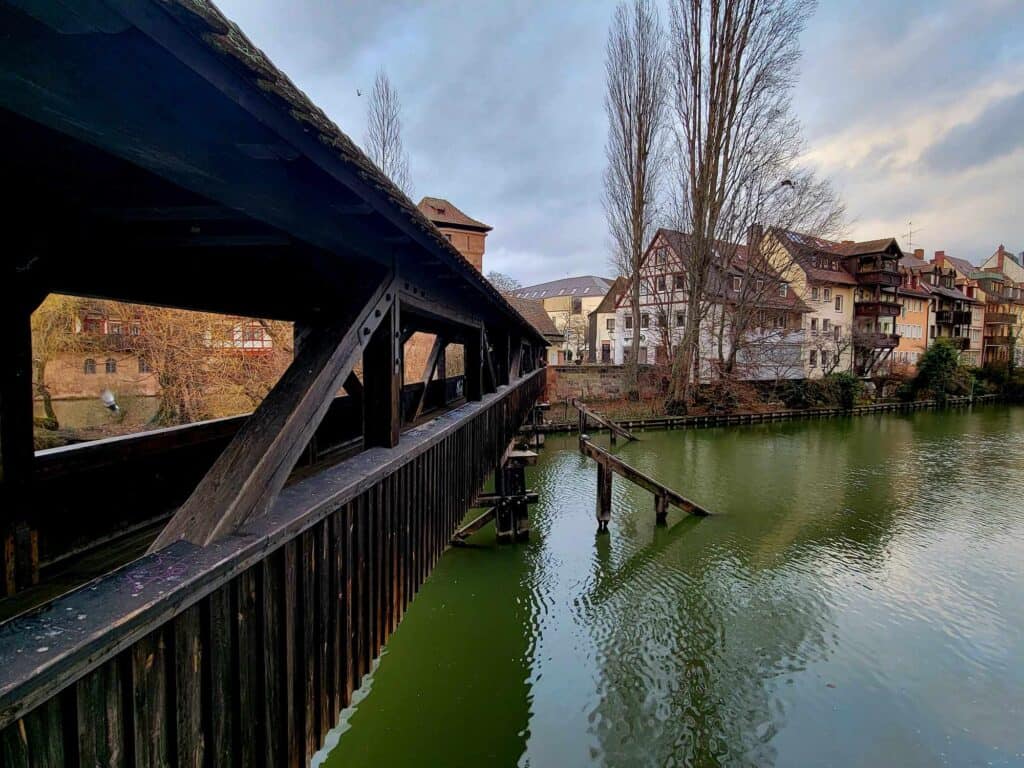
History & Significance
My husband and I crossed this pretty wooden bridge and thought, “How romantic!” Then we discovered its history!
The Hangman’s Bridge (Henkerbrücke) crosses the River Pegnitz, and its name is quite literal. Executioners were often given a special residence near the bridge, and you’ll find the Henkerhaus (Hangman’s House) on the eastern side of the bridge. The bridge allowed the hangman easy access from his house to his duties at the execution site, which was located nearby in the old town.
It was built after the flood of 1595 which destroyed the old bridge, and then the newer one was restored after damage from World War II.
The Hangman’s Bridge is open to the public and you can cross it any time. The eerie yet picturesque bridge is a must-visit for history lovers and dark tourism fans alike.
7) Check out the Hangman’s House (Henkerhaus)
Trödelmarkt 58, 90403 Nürnberg
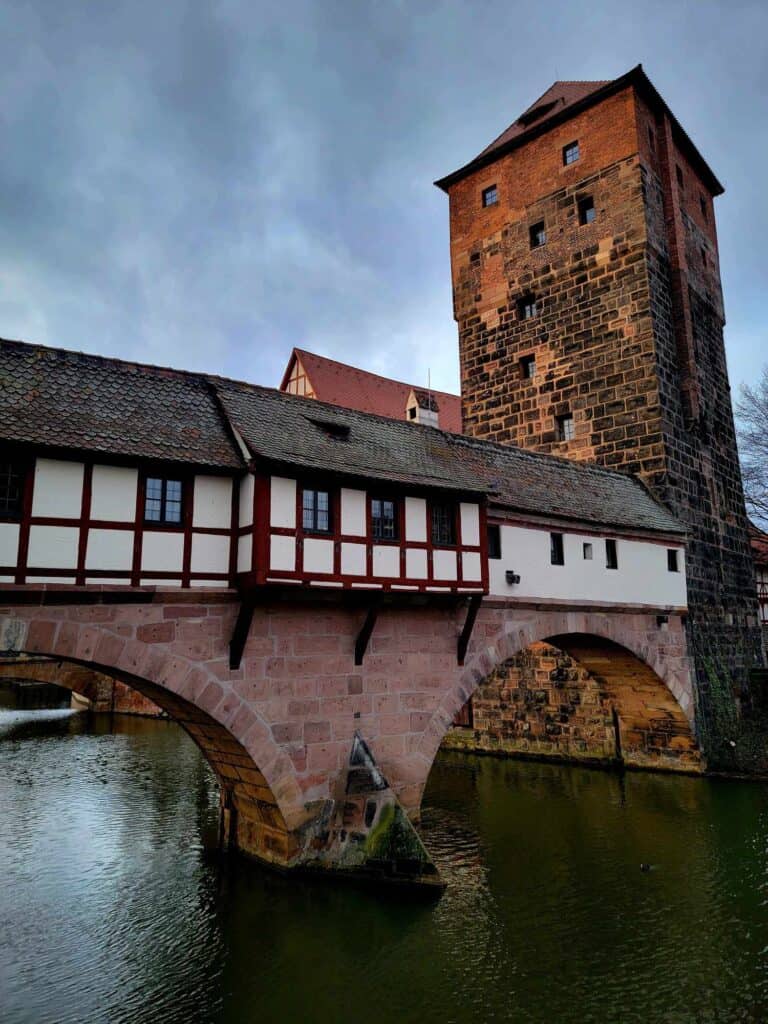
The 500-year old Hangman’s House right next to the Hangman’s Bridge served as the residence of Nuremberg’s executioners and their families for centuries. Today it’s right in the center of Nuremberg’s prettiest postcard photo of the river, but its past is definitely darker.
The museum inside includes a series of placards focused on Nuremberg’s medieval criminal justice system, and the strange and unique role of executioners in medieval society. The information is really very fascinating and contains a lot of information about the executioners’ lives, profession, family, and more.
While the role of the executioner was clearly necessary in a society that incorporated executions into their criminal justice system, the executioners themselves were shunned and separated from normal life in the city.
All of the information panels are in German and English.
You won’t find any instruments of execution or other grisly artifacts here, but it is a fascinating learning experience. The house itself is actually really beautiful and built right over the river, so you can get some nice photos out the windows. I guess after a hard day’s work the executioners needed a nice relaxing space to decompress…
Visiting Information for the Hangman’s House
🕒 Museum Hours
The Hangman’s House is closed from January to March, and opens again on April 1.
Hours of operation are Tuesday – Sunday, 12:00PM-5:00PM, closed on Mondays.
🎟️ Admission
Adults €3, 14-18 years old €2, and children under 14 are free.
8) Spend Some Time at the Germanisches National Museum
Kartäusergasse 1, 90402 Nürnberg
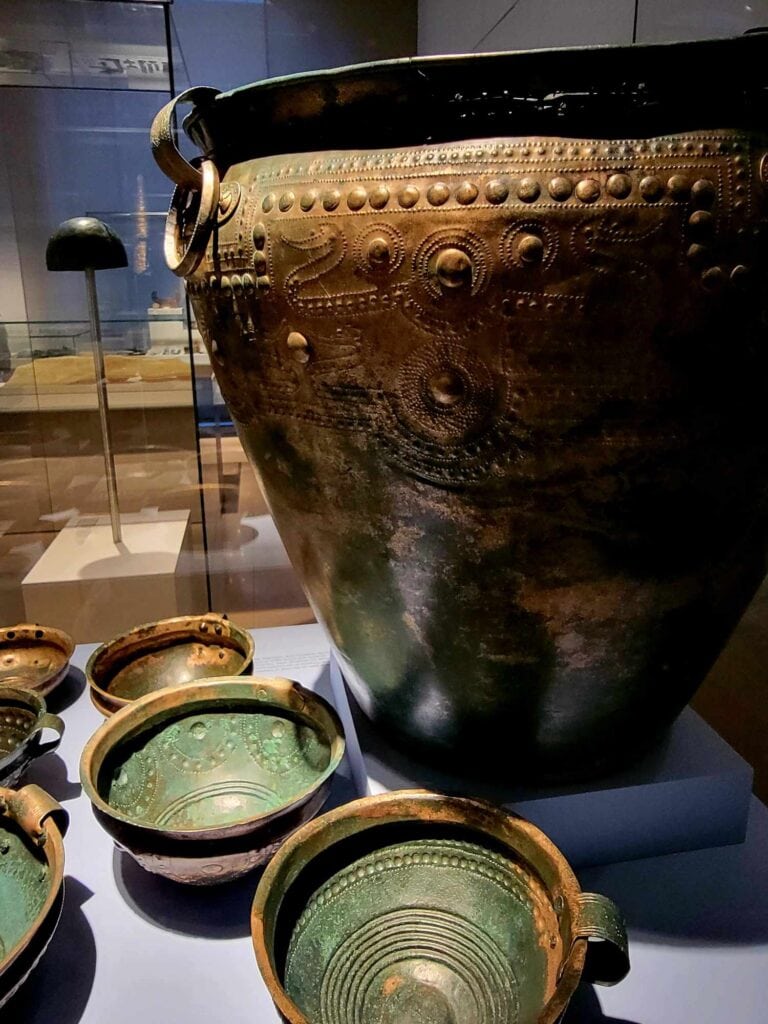
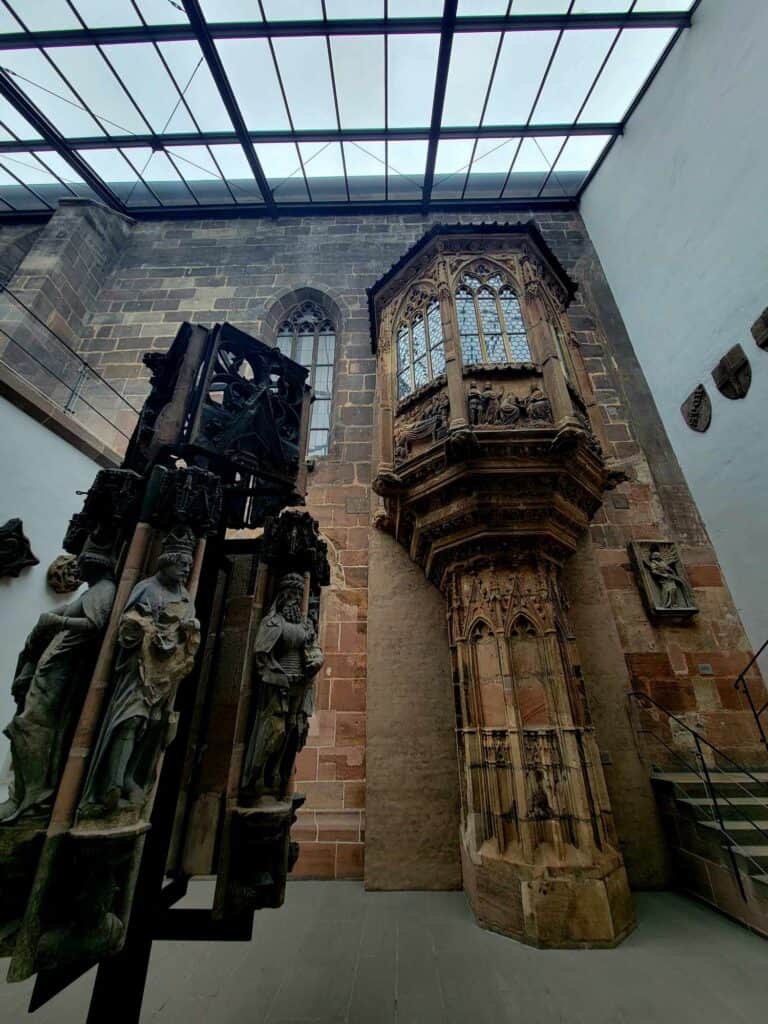
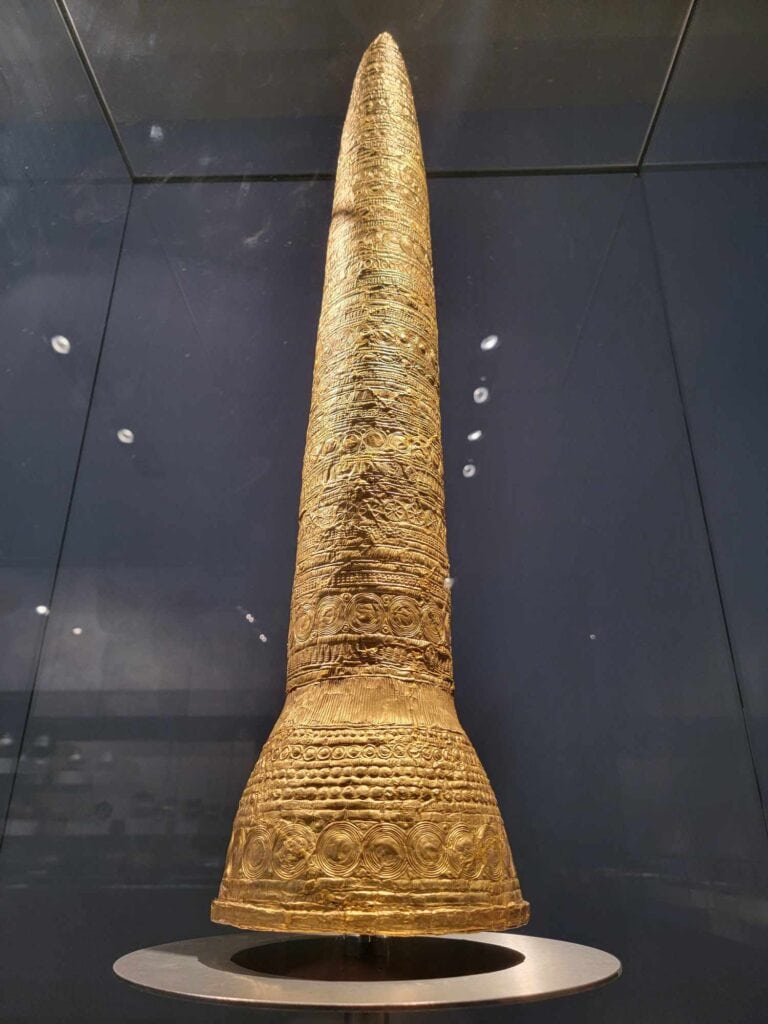
If you’re a museum hound, have I got a day for you! The National Museum is an absolute world-class treasure trove of art, history, and culture! Founded in 1852, it houses over 1.3 million objects, from incredible prehistoric artifacts, medieval works, musical instruments, and all the way through to contemporary art.
I’ve spent two full days total in this museum and I still haven’t made it through everything yet. So if your time is limited, your best strategy is to look at a map, and prioritize which things you want to see and in what order.
If you’re pressed for time, I recommend checking out these 3 must-see sections:
- The Medieval Section located in the monastery cloister
- The European Paintings section included works by Dürer, Rembrandt, and more, and right next to the Behaim Globe, a UNESCO World Heritage Treasure of Mankind!
- The prehistoric artifacts and the golden hat!
During World War II, many of the museum’s most valuable objects were evacuated and hidden away in underground storage sites (Nuremberg’s former network of underground medieval beer cellars) to protect them from bombing raids. Some parts of the collection were still lost or damaged, which makes me sad, but the fact that most survived is pretty astounding.
The museum itself is housed in a former Carthusian monastery, and parts of the medieval cloister still survive, making the building itself an architectural work of art! The medieval spaces create an amazing mood and space to display the incredible collection.
Anyway, I could go on and on about this museum because it really is on my short list of absolute favorite museum experiences in Europe. For art and history lovers, this is one of the best museums in Germany you can visit.
Visiting Information for the Germanisches National Museum
🕒 Hours: Tuesday–Sunday, 10:00 AM – 6:00 PM (Wednesdays open until 8:30 PM)
🎟️ Admission: €8 for adults, free on Wednesdays after 6:00 PM
If you love historical artifacts, consider pairing this with a visit to the Imperial Castle’s museum.
9) Discover Weißgerbergasse: Nuremberg’s Most Beautiful Medieval Street
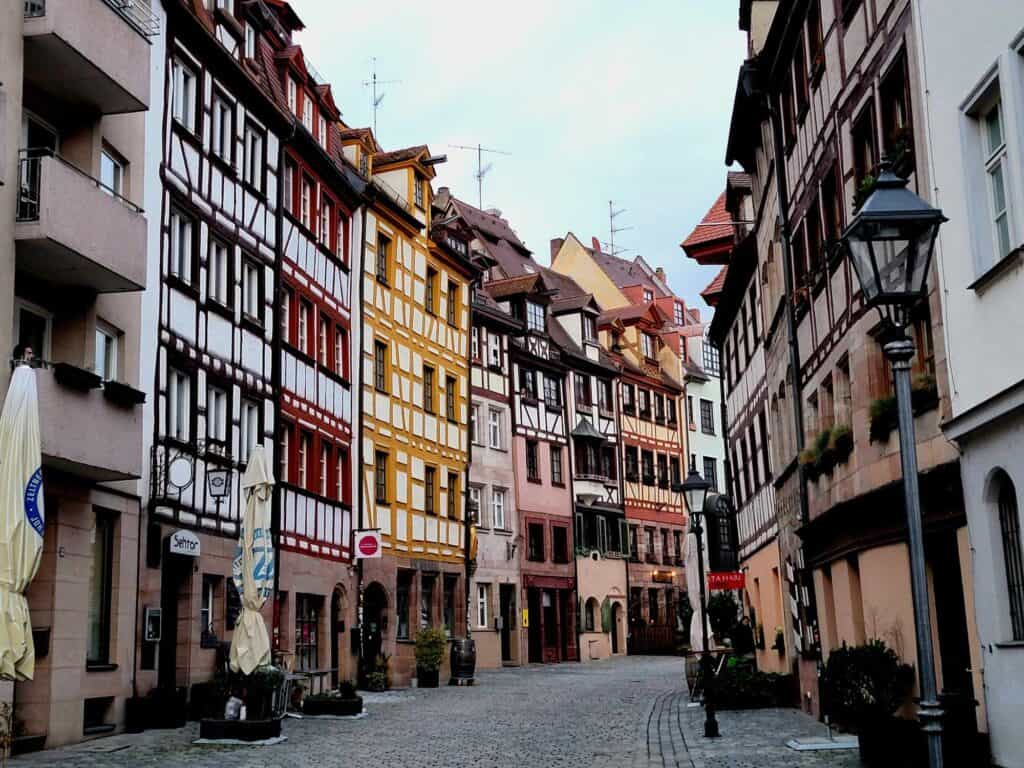
For photographers, this is one of the best places in Nuremberg for pictures!
Despite massive bombardment during WWII, pockets of Old Nuremberg managed to survive, and Weißgerbergasse (VICE-gerber-gassa / White Tanners Lane) is one of them. Lined with charming half-timbered houses, this cobbled lane will absolutely transport you back in time and give you a tantalizing glimpse of what the city looked like before World War II.
My jaw literally dropped when I looked up this street as we passed. I wasn’t expecting it, and it felt like an absolute postcard come to life!
As its name suggests, it was home to Nuremberg’s tanners and leather workers during the Middle Ages. The “white” part refers to the alum-tanning process, which produced lighter-colored leather compared to darker vegetable-tanned leather.
Tanning and leatherworking were fairly lucrative jobs, and unlike other tradespeople in the Middle Ages, tanners were fairly well-off. Their houses tended to be larger and often had three or four stories. Their workshops would have been on the ground floor, visible to passers-by on the street, and their living spaces were above.
One of the interesting things about Weißgerbergasse is that many of the houses are still privately owned, and it isn’t overly touristy. So you really get the feeling of a vibrant residential community, like it was back in time.
Several of the old tanners’ houses now house cozy cafés, bars, and boutique shops. So it’s a great place to grab a coffee or a local wine, relax, and get some iconic photos.
10) Turn the Ring on the Schöner Brunnen for Luck!
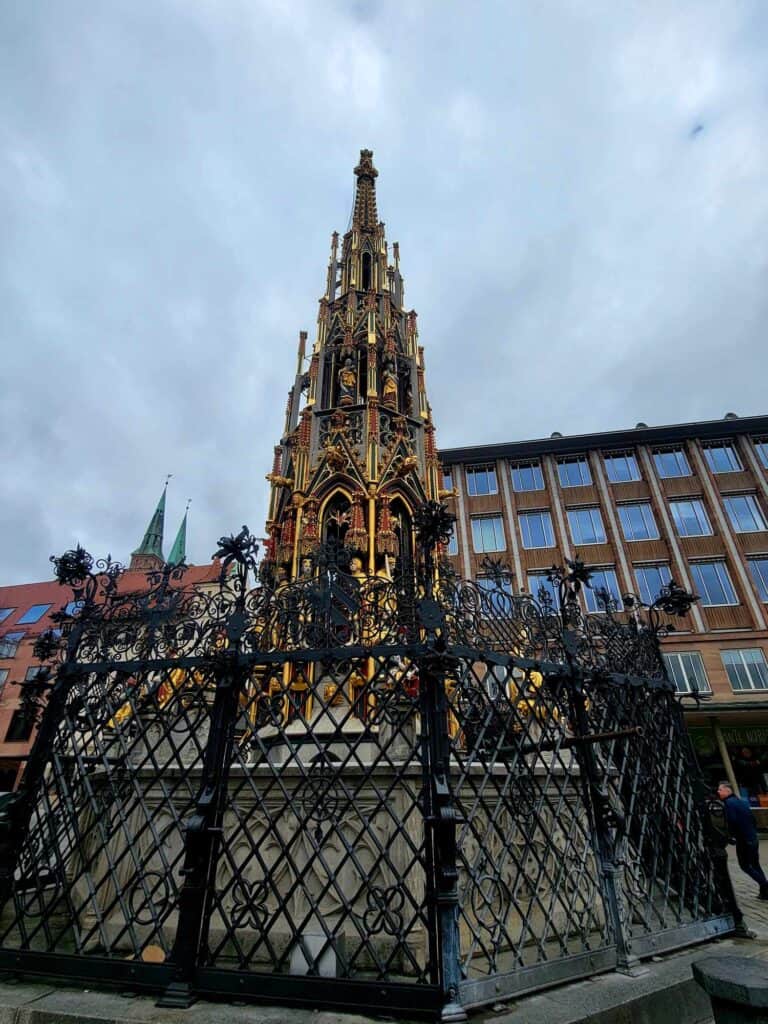

Schöner Brunnen literally means “beautiful fountain” and it couldn’t have a more perfect name!
Built between 1385 and 1396 by Heinrich Beheim, a master stonemason and construction supervisor, its original purpose was to be a gothic church spire. But as work continued, it was decided by city officials that it was just too beautiful to be so far away from eye level, and the whole project changed. So it was repurposed as a fountain for all the citizens of Nuremberg to enjoy as part of their main water supply.
You can spend quite a while looking at the fountain and all of its intricate statues designed to symbolize the religious, philosophical, and political themes of the day. There are 40 statues in total including: Pythagorus, Euclic, Aristotle, the 4 Apostles, Moses and other prophets, and 7 electors of the Holy Roman Empire.
To preserve the original fountain from degradation over time it was moved to the Germanisches Nationalmuseum where you can see all the original sculptures. A meticulous copy was made in 1902, and was packed and crated in place to save it from bombardment during WWII. That mission succeeded, and this is what you will see today.
The Lucky Ring Legend:
A small brass ring embedded in the fountain’s ironwork is said to bring good luck if you can find it and turn it three times while making a wish. It can’t hurt, right?
11) Discover St. Lorenz Church (Lorenzkirche): Nuremberg’s Gothic Masterpiece
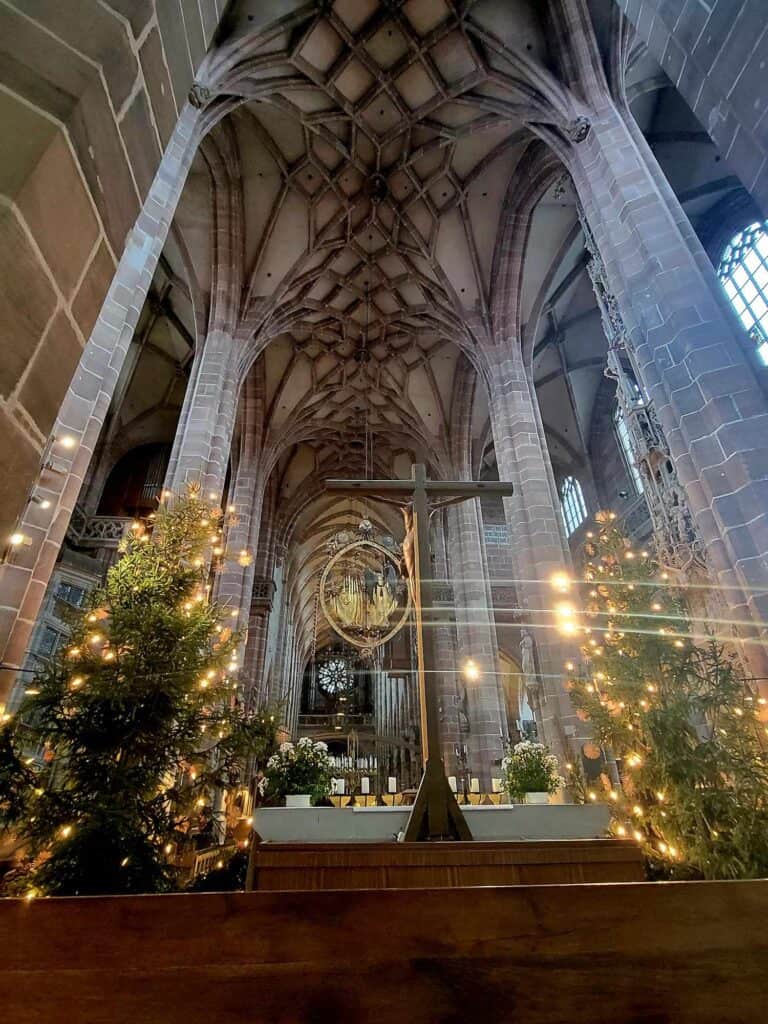
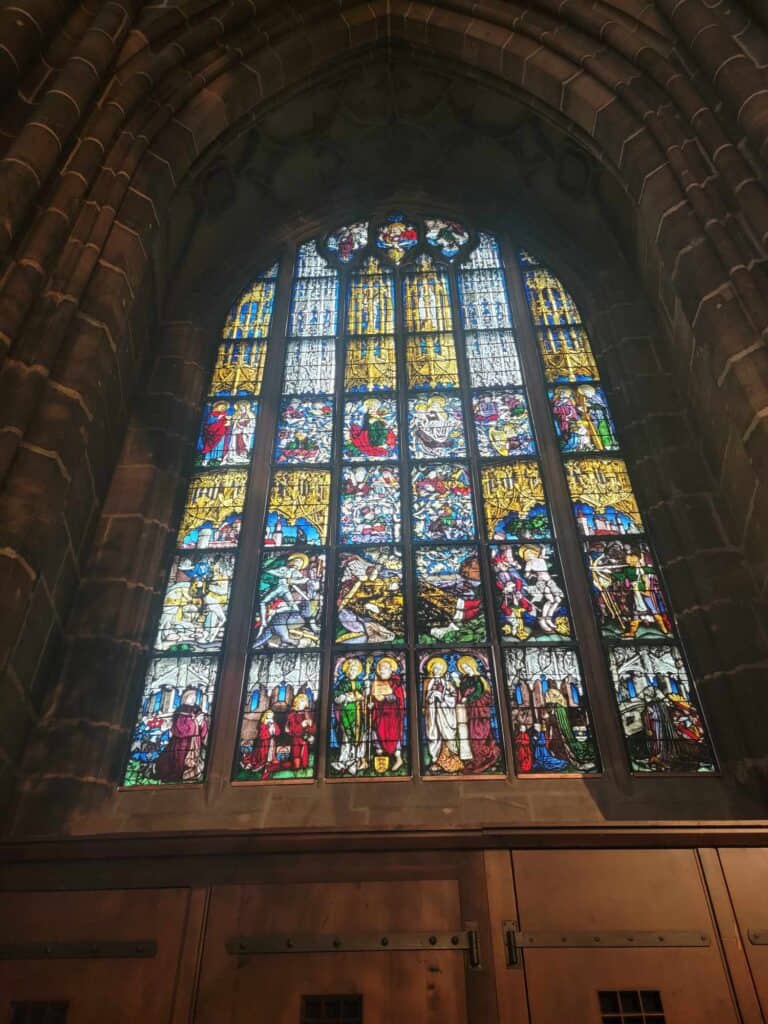
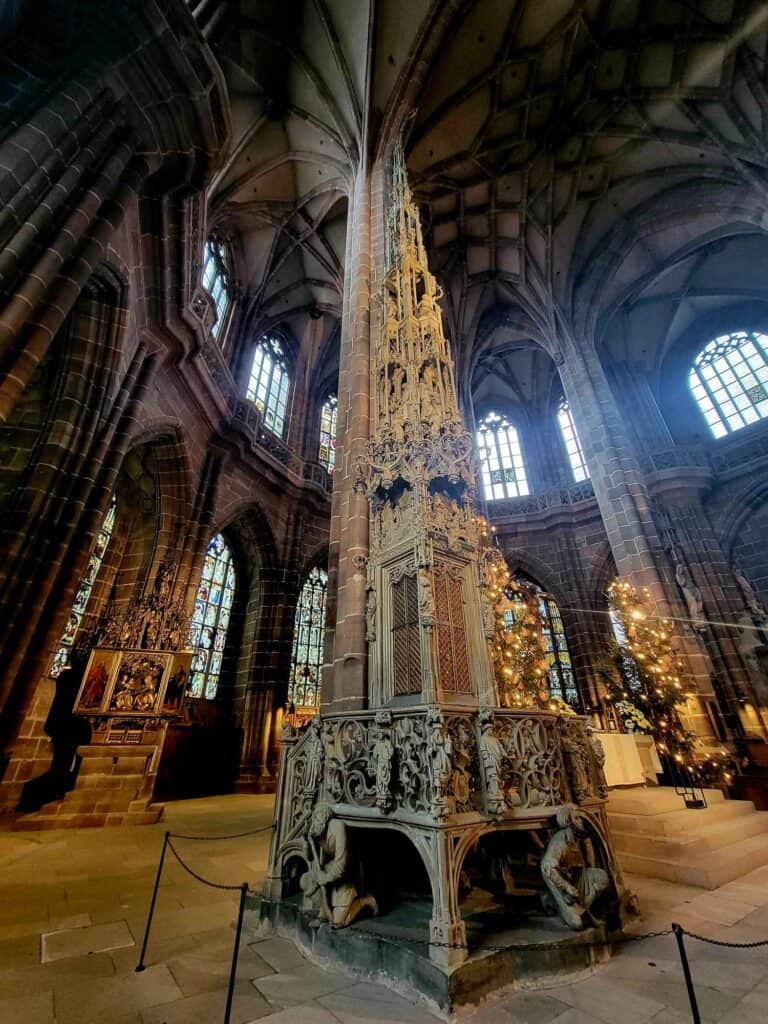
The twin towers of another incredible medieval church, Lorenzkirche, dominate the skyline in Nuremberg’s Old Town. Built between 1250 and 1477, they stand an impressive 260 ft./ 80 m tall!
The shell of St. Lorenz Church was heavily damaged during the war, but much of the incredible artwork survived. Stained glass windows (some dating from the 15th century) and religious sculptures were removed and stored in underground tunnels to prevent damage.
But the most incredible and iconic sculpture, the late 13th century Tabernacle by Adam Kraft, was too huge and fragile to move. The massive piece was packed all around with sandbags and reinforcements in the hopes it might survive. And it did, even though the roof collapsed and most of the building was reduced to rubble!
Using many of its original stones, the church was reassembled and restored after the war. This one is a must-see, just to look at the jaw-dropping Tabernacle in person.
The church also houses one of the world’s largest pipe organ with over 12,000 pipes, and Nuremberg’s oldest bell which is on display.
Donations are welcome, but there is no entrance fee.
12) Hang out in the Handwerkerhof: Nuremberg’s Hidden Medieval-Style Craftsmen’s Courtyard
Königstraße 82, 90402 Nürnberg
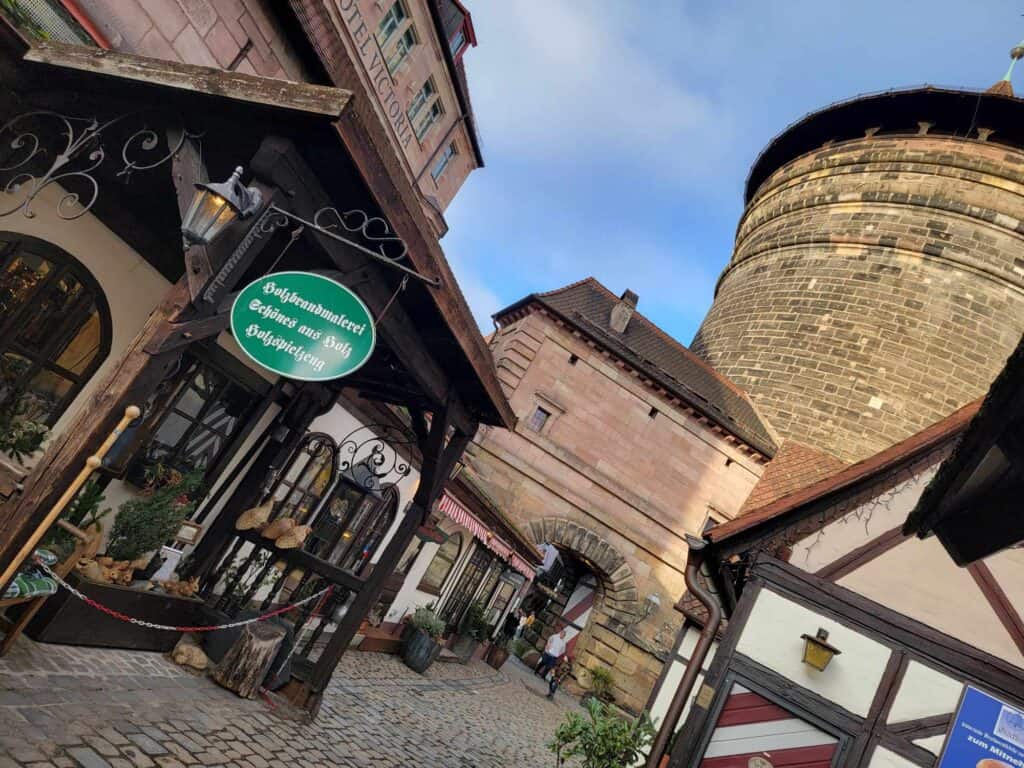
Welcome to the secret spot for the best souvenir shopping in Nuremberg!
Located just behind Nuremberg’s City Walls, the Handwerkerhof (Craftsmen’s Courtyard) is a quaint complex of buildings in a former defensive courtyard that feels like stepping into a medieval village. It is not original to the Middle Ages and was not built until 1971.
The aim of the construction was to replace many medieval buildings in the area that had been destroyed during World War II, and to create a sort of living history center which could be the home to traditional craftspeople.
It’s a great place to pick up traditionally made souvenirs, gingerbread (Lebkuchen) with a secret hundreds-year old recipe, and to stroll through the cobbled streets and half-timbered buildings. The art of medieval craftsmanship was so important to Nuremberg as it developed over the centuries, and this is a really cool way to be able to feel a part of that.
The location, right up against the old city walls and the imposing and photogenic White Tower is just perfect for a little time travel.
And if you happen to be in Nuremberg at Christmas time, the charm of the Handwerkerhof is over the top! Be sure to grab a hot mug of glühwein and a piece of that historic Lebkuchen!
13) Frauenkirche: Nuremberg’s Historic Church with a Fascinating Mechanical Clock

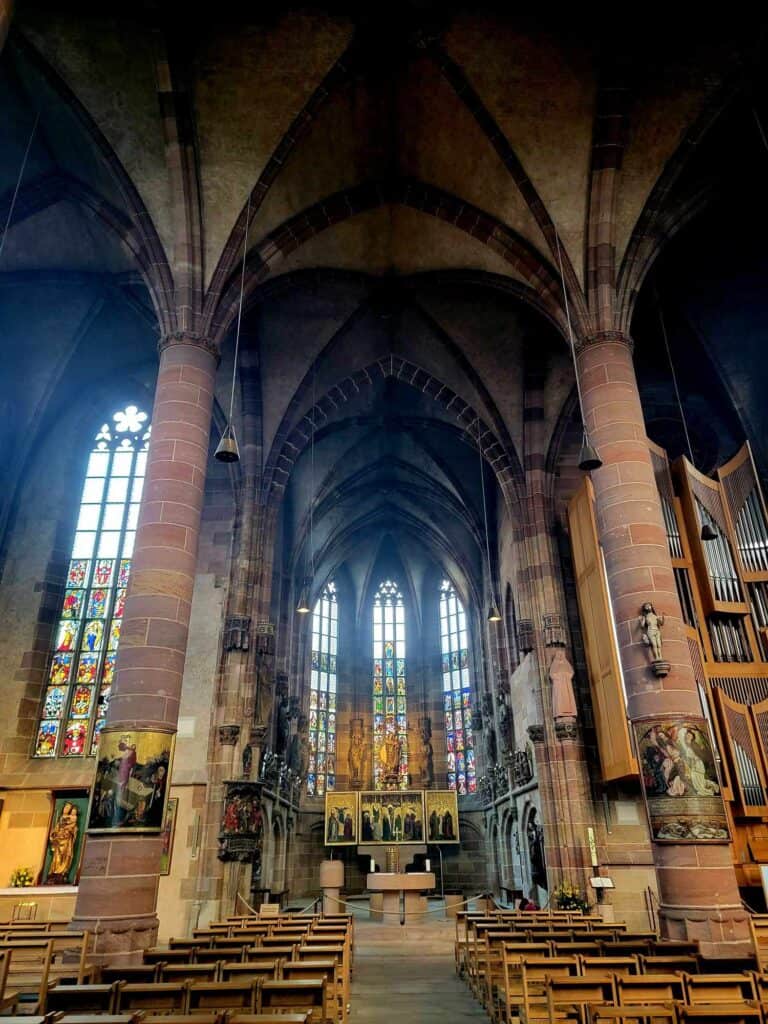
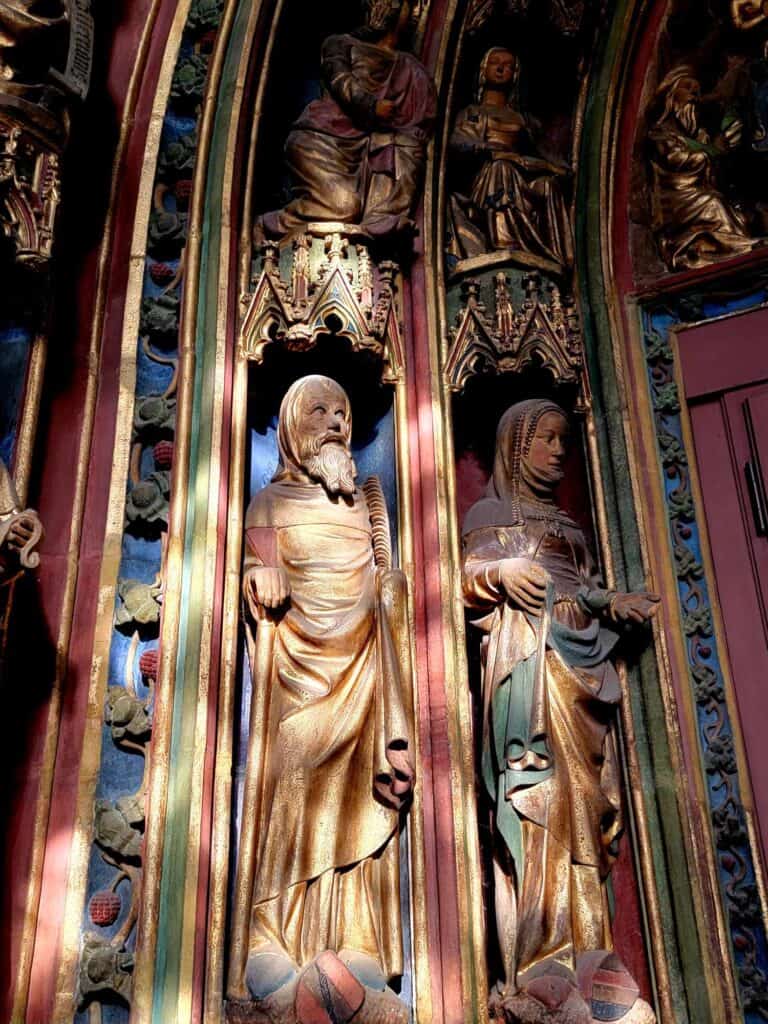
The Frauenkirche (Church of Our Lady) in Nuremberg was built between 1352 and 1362 by Emperor Charles IV on the site of the destroyed Jewish synagogue following the pogrom of 1349 in which Nuremberg’s Jewish population was blamed for an outbreak of the Black Death.
The Frauenkirche was heavily damaged during WWII, but the facade of the building and one of the naves survived. The remainder of the building was reconstructed from the rubble.
On the facade is an elaborate clock called Männleinlaufen which was placed there in 1506. Every day at noon mechanical figures representing the seven electors of the Holy Roman Empire emerge, encircling a figure of Charles IV! It is the centerpiece of the Hauptmarkt, and one of the most unique things to see in Nuremberg.
You’ll also find inside some reconstructed and preserved medieval stained glass, a beautiful triptych from the 1400s called the Tucher Altar, and beautiful gothic and renaissance sculptures.
Remember to look at the interior walls of the facade and the nave to see the original building remains!
Visiting Information for Frauenkirche
🕒 Hours: Monday–Saturday: 10:00 AM – 6:00 PM, Sunday: Closed except for services
🎟️ Admission: Free, but donations are welcome
14) Heilig-Geist-Spital: Nuremberg’s Historic Hospital & Imperial Regalia Vault
Spitalgasse 16, 90403 Nürnberg
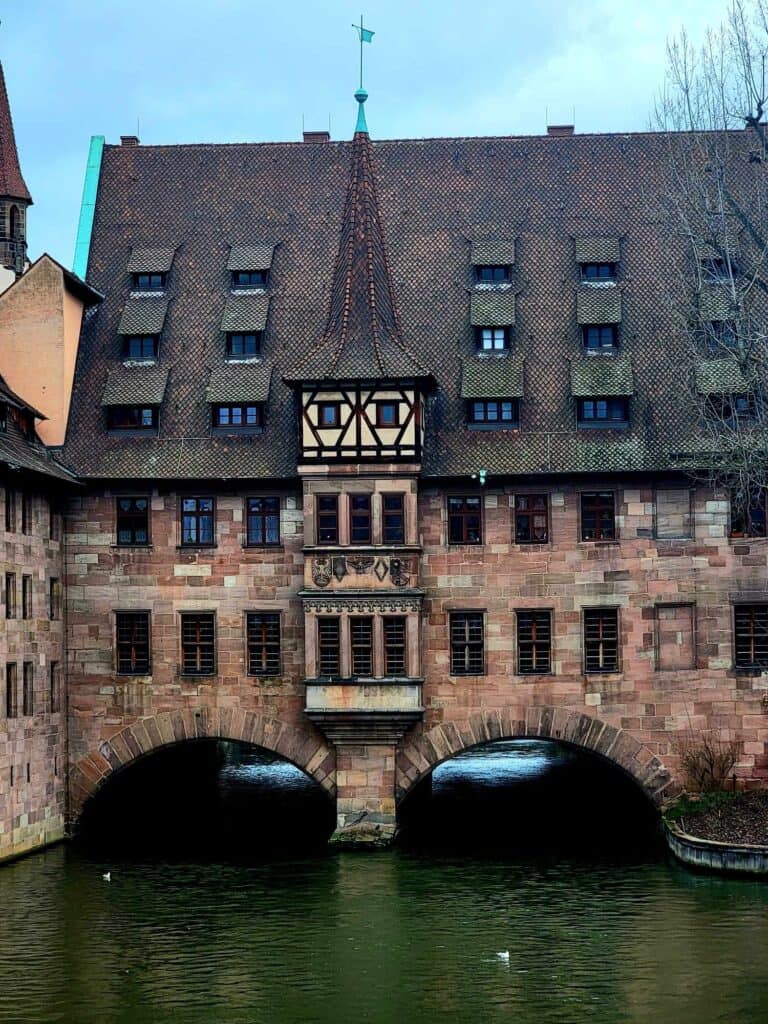
When you first see the Heilig-Geist-Spital it’s one of those stop-everything-and-take-a-picture moments.
The Heilig-Geist-Spital (Holy Spirit Hospital) was founded in 1332 by Konrad Gross, a wealthy Nuremberg patrician, as a hospital and a care home for the sick and elderly in Nuremberg. It was actually one of the largest hospitals in the Holy Roman Empire at the time, and comprised a huge part of the city’s healthcare system.
Believe it or not, the hospital also housed the Imperial Regalia (crown jewels) of the Holy Roman Empire from 1424 to 1796 before everything was moved to Vienna for safekeeping during the Napoleonic Wars. As a trusted religiously-affiliated institution in the city, it got the responsibility of housing the priceless treasure when it wasn’t being used for ceremony or on display in the Frauenkirche.
The Heilig-Geist-Spital was heavily damaged during WWII bombings, but it was meticulously rebuilt in the 1950s, and closely follows its original medieval design. Not all of the building was reconstructed but what is there is quite beautiful, and you can see why it’s one of Nuremberg’s most photographed landmarks.
There’s also a restaurant inside which is one of the best places to try traditional Franconian cuisine with a view over the Pegnitz River. There’s also a small chapel you can visit!
15) Walk the Nuremberg City Walls and Towers
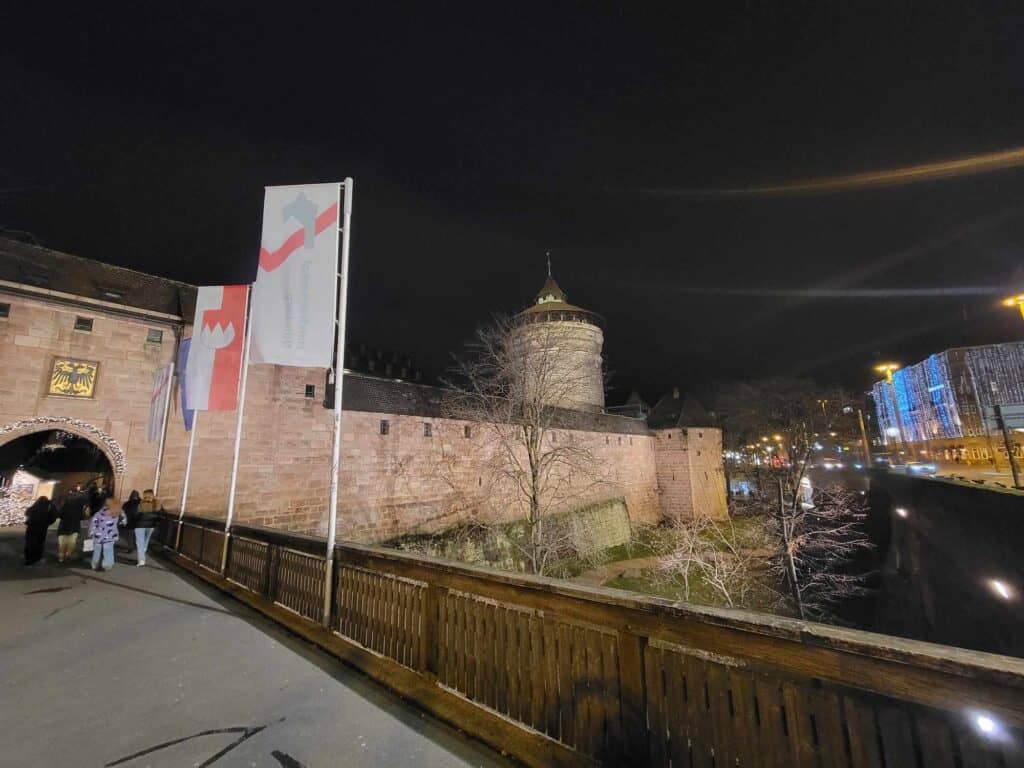
To me, there’s nothing more evocative when visiting a medieval city than to walk its walls. It’s fun to let the imagination wander and know that you’re looking at part of history that took a huge effort to build, and maintain. And of course, the walls filled the vital role of keeping the town and its people safe from outside threats.
Many cities across Europe demolished their walls long ago to allow expansion, and because their defensive purposes were outdated. Nuremberg doesn’t have a complete set of walls, but they are some of the most interesting and historic in Germany.
As you walk, you’ll see historic towers like the Toll Booth Tower, old gates like the Kaiserburg Gate and the Nuremberg Gate. Photo ops abound!
A great place to see the walls and start your exploration is from the Albrecht-Dürer-Haus. You can just imagine the great Renaissance master looking out the window of his studio on to those same walls you can see today. It’s also right near the Nuremberg Castle.
16) Tour the Historic Art Bunker (Kunstbunker), Nuremberg’s Underground WWII Treasure Vault
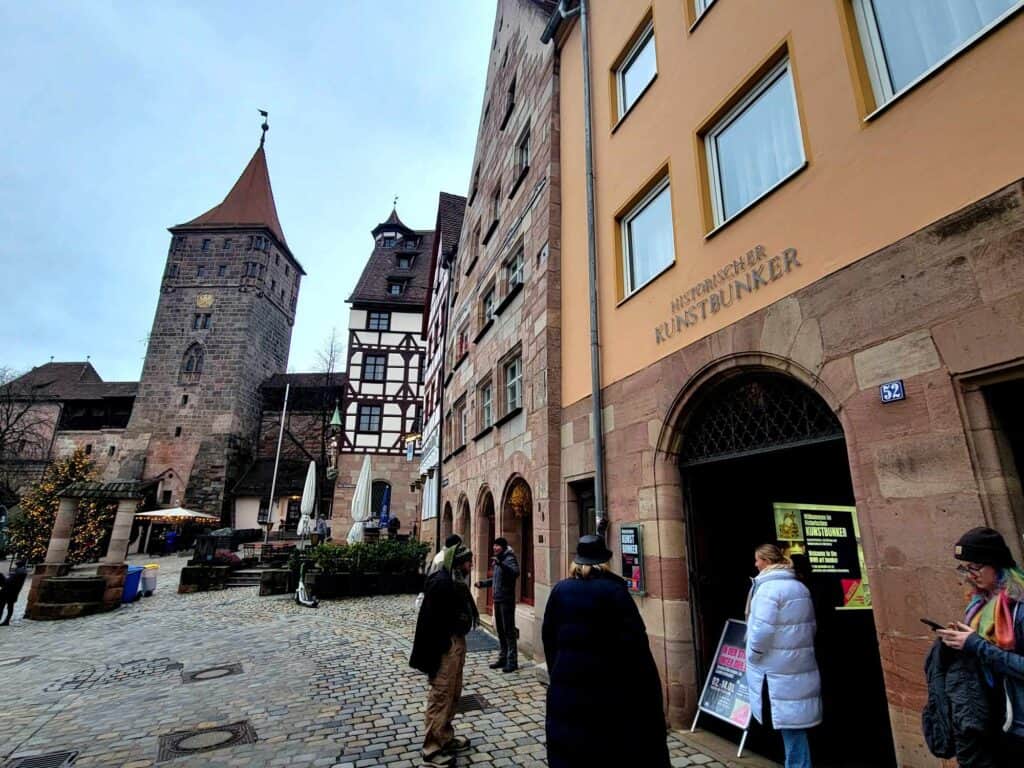
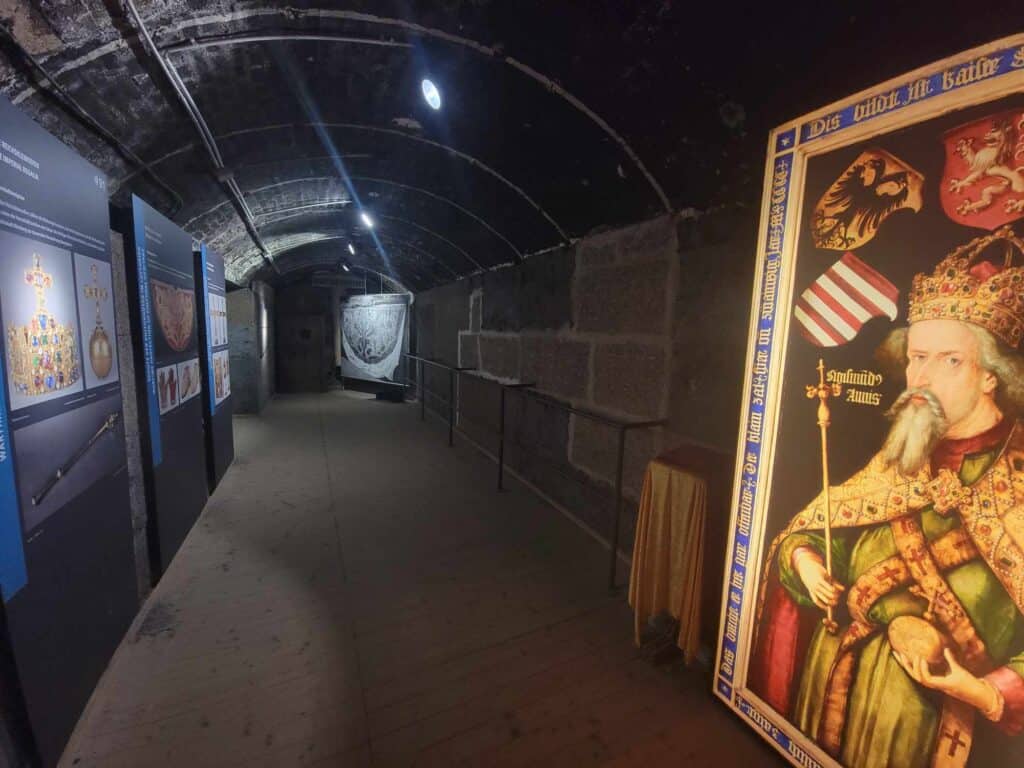
One of the best history tours in Nuremberg is the tour of the famous historic WWII Art Bunker! It’s a place that has medieval history, art history, and World War II history to explore all at the same time!
The reason that Nuremberg has retained so much of its authentic medieval character is because so much of the precious treasures within managed to be saved from the Allied bombing that came at the end of the war.
Stashed Nazi Treasure
If you’ve seen the movie Monuments Men, you’ll know that many of Germany’s artistic and historical treasures, and thousands of pieces of art looted from other countries by the Nazis were preserved in underground tunnels and salt mines to preserve them until after the war.
From Medieval Beer Tunnel, to Art Preservation Bunker, to Museum
Nuremberg’s extensive series of medieval tunnels, created to store beer, were repurposed during the war to house and protect priceless and irreplaceable pieces of art. So many original medieval stained glass windows, gold objects, statues, and wooden carvings survived.
You’ll get all the stories, see where the art was, see the infrastructure, the guard room, and relics from the bombings. Our guide was amazing, and this tour is one we still remember and talk about!
If you find all this history as fascinating as I do, and want more details check out: The Nuremberg Art Bunker and its Dark Secrets.
Visiting Information for the Art Bunker (Kunstbunker)
🇬🇧 Daily guided tours in English can be reserved at 1:15 p.m. and also from April to December – at 5:15 p.m. There are also 🇩🇪 3 daily guided tours in German.
🕒 Duration: approximately 60 minutes
🎧 Audioguides: English, French, Spanish, Italian
📍Meeting point: Historic Art Bunker, Obere Schmiedgasse 52
17) See the Documentation Center & Nazi Party Rally Grounds: History, Propaganda & Lessons for the Future
Bayernstraße 110, 90478 Nürnberg
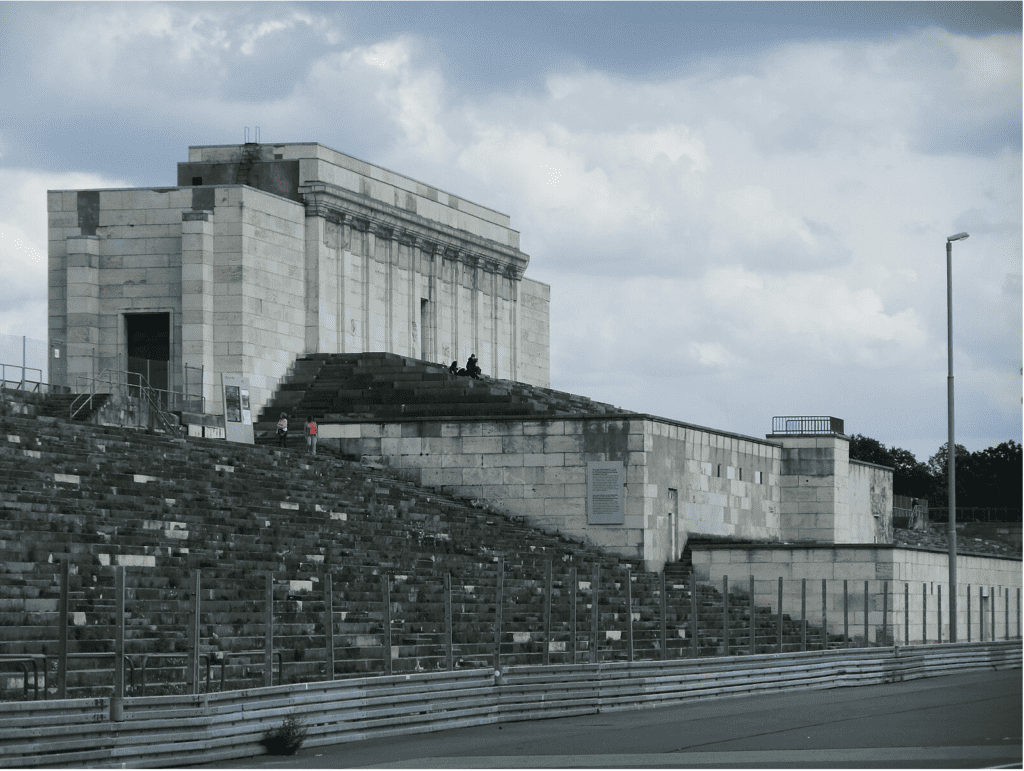
The Nazi Party Rally Grounds (Reichsparteitagsgelände) in Nuremberg held massive propaganda rallies organized by the Nazi Party under Adolf Hitler. The rallies were held from the 1930s until the end of World War II, with millions of people attending.
The grounds and buildings, located just outside the city center, were designed as showpieces for demonstrating the power of the Nazi regime. They include a series of buildings, open fields, and ceremonial areas which are all in various stages of repair and preservation.
What You’ll Find at the Nazi Rally Grounds
Zeppelinfeld and Luitpold Arena are the large areas where rallies took place. Hitler often stood on the Reviewing Stand above the crowd to give speeches.
Kongresshalle (Congress Hall) is a building designed after ancient Roman amphitheaters, and was meant to be the centerpiece of the grounds but was never finished. This is where you’ll now find the Documentation Center Nazi Party Rally Grounds Museum. Inside there are exhibitions about the history of the rallies and the dangerous ideology they spread.
The museum’s focus is not just to preserve history, but also as an educational process clearly focused on the importance of preventing atrocities like those committed under Naziism from happening again. It is committed to teaching future generations about the dangers of authoritarianism, propaganda, and extremism.
Renovations and Current Status
There has been a lot of debate about whether to completely destroy the buildings or restore them, and to what extent restoration should take place at all. So you will likely see some areas left to ruin, some refurbished to hold exhibits, some areas are closed off because of safety concerns, and other areas will be left in a dilapidated state as a reminder of what eventually happens to tyrants and autocratic regimes.
🚧 Because of a very large and ongoing construction project which began in 2021 and is not scheduled for completion until 2026, there is currently an interim exhibition in the space titled “Nuremberg – Site of the Nazi Party Rallies – Staging, Experience and Violence.”
Visitor Information for the Documentation Center & Nazi Rally Grounds
🕒 Museum Hours
Daily from 10:00 AM – 6:00 PM, though hours may vary, so check the museum website for up-to-date information.
🎟️ Admission
€6 for adults, with discounts available for students, seniors, and groups.
🚧 From the museum website:
“The exhibition at the Documentation Center Nazi Party Rally Grounds is not suitable for children under the age of 14.”
18) See the Nuremberg Trials Memorial and Courtroom 600 (Justizpalast) Where Justice Changed the World
Fürther Str. 110, 90429 Nürnberg

Just as Nuremberg served as a seat of Nazi power, it was also the place of reckoning for war criminals, where they faced accountability for their actions during the war and the Holocaust. The famous post-war Nuremberg trials were conducted by the Allied forces in the courthouse in Nuremberg, and set a precedent for the prosecution of crimes against humanity and the establishment of global human rights standards.
The trials were held between 1945 and 1949, and key Nazi leaders like Hermann Göring, Rudolph Hess and many others were tried for war crimes, and crimes against humanity. Today it is one of the best places to learn about human rights in Germany.
Courtroom 600
Courtroom 600, where the trials took place is the most iconic part of the building, and is still in use today as a regular courtroom for cases in Nuremberg. but parts of it have been preserved as a museum to give visitors a sense of the historic proceedings that took place there.
The room itself is relatively unassuming, but will look familiar to you if you’ve seen historical photos of the trials – with the simple wooden benches and a long defendant’s dock where Nazi leaders sat during their trials.
Museum & Memorial
The Nuremberg Trials Memorial (Dokumentationszentrum) is located inside the courthouse. It displays a range of exhibits including photos and videos, documents, and artifacts from the trials.
The museum also has reproductions of documents that highlight the significance of the legal precedents set by the Nuremberg trials in international law.
Visiting Information for the Nuremberg Trials Memorial & Courthouse
🕒 Opening Hours
The Nuremberg Trials Memorial is open to the public daily, typically from 9:00 AM to 6:00 PM, but hours may vary, so it’s a good idea to check ahead.
🎟️ Admission: Entrance to the documentation center and museum is usually €5 for adults. There are discounts available for students, seniors, and groups.
🔸 Best Time to Visit: If you’re hoping to see Courtroom 600 when you visit, it’s best to check the court’s schedule, as it is sometimes closed for legal proceedings.
💡Pro-tip
There are one hour long public tours of the Trials Memorial on a first-come first-served basis every Saturday at 2pm, but the slots fill up quickly. If you want to make sure you get the whole experience with a trained guide, you can retrace the WWII history of Nuremberg on this highly-rated walking tour with hotel pickup and drop-off. It will include the courtroom, courthouse, memorial, and other WWII sites like the Nazi Rally Grounds.
19) Walk Through the Way of Human Rights, Nuremberg’s Powerful Symbol of Change
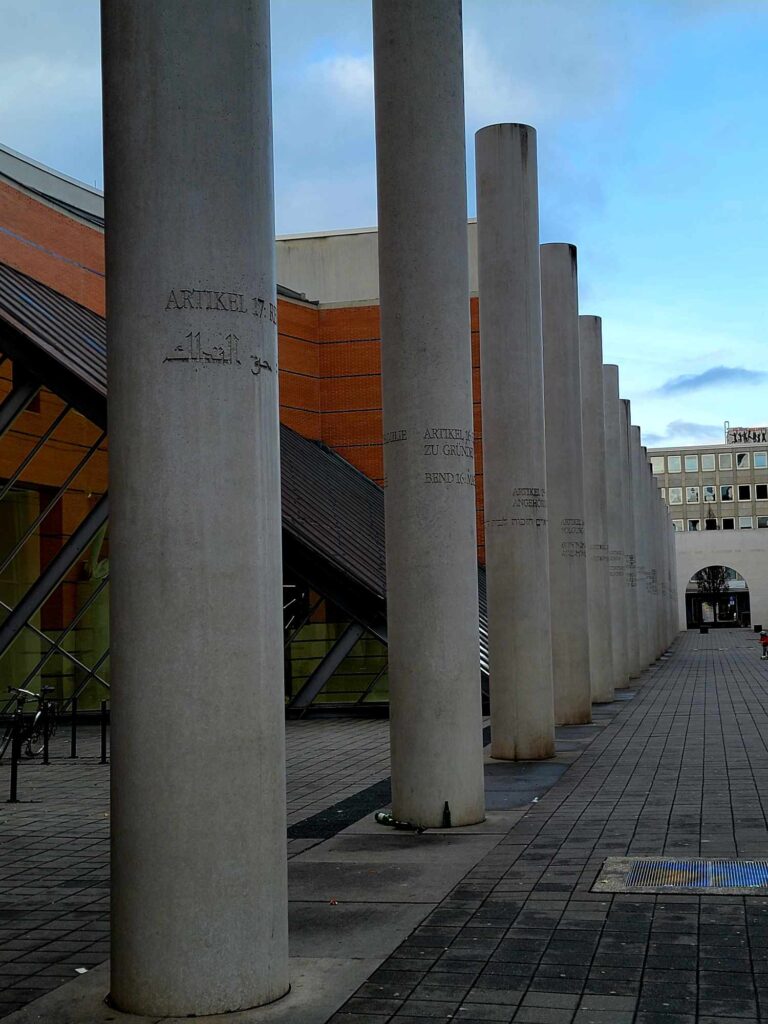

This profound installation of tall gray columns symbolizes Nuremberg’s transformation from a city of Nazi oppression to a city where justice was served to war criminals, and now to its new title as the “City of Human Rights.”
What You’ll Find
You’ll enter the avenue through an arch from the Kornmarkt and pass between 27, 8-meter (26 foot) high concrete pillars arranged in two rows.
Inscribed on each pillar and on two large plaques found on the ground, is an article of the General Declaration of Human Rights both in German and another language. One pillar is intentionally left blank to symbolize that the fight for human rights is an ongoing process which is yet unfinished.
“Obligation to the Past”
The Israeli artist Dani Karavan created the work which was opened in front of the Germanisches Nationalmuseum in 1993. It cemented (literally) Nuremberg’s new image and the entire city’s consciousness about its obligation to the past. The Way of Human Rights in shows the force of momentous ideas for the good, as it shook off its past where the momentous ideas at the Nazi rally grounds brought out the evil in society.
Today it is one of the most powerful and positive post-war monuments in Germany.
20) Pay Respects at the Stolpersteine Markers Nuremberg’s Subtle Yet Powerful Holocaust Memorials
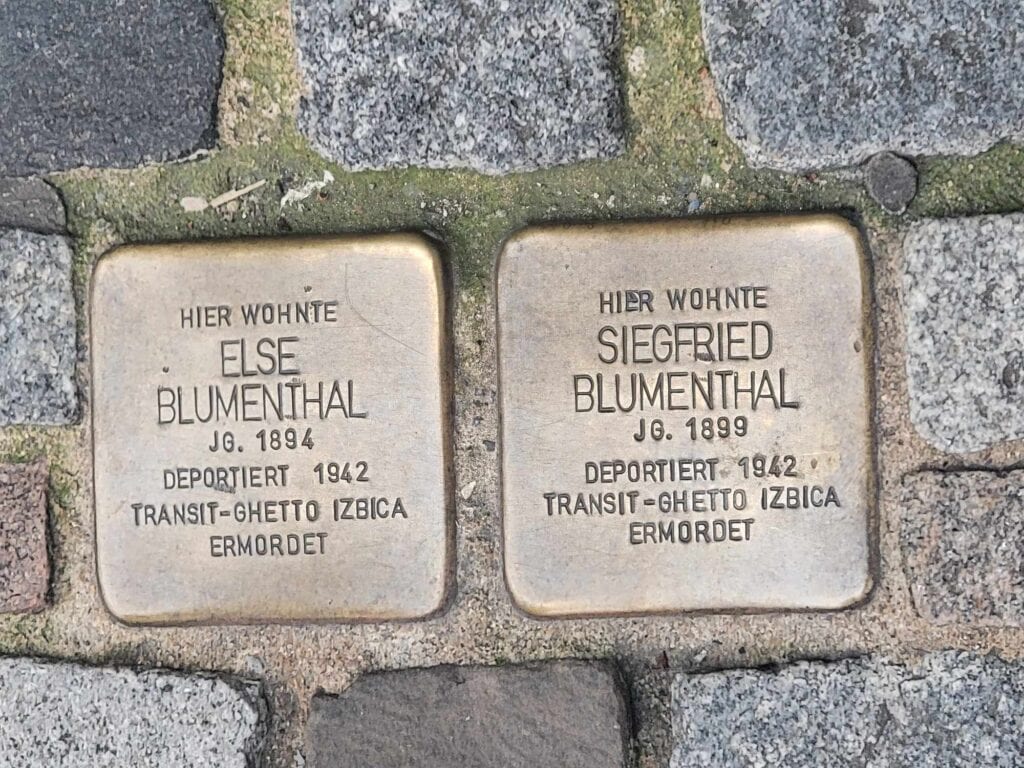
For more information about the thousand year old Jewish community in Franconia, you can visit the Jüdisches Museum Franken in nearby Fürth. It contains exhibits on the history of Jewish life in Nuremberg, and about the Holocaust. It’s easiest to visit if you have a car.
Also, be sure to look down at the cobblestone streets for “Stolpersteine” or stumbling stones which are bronze markers engraved with the names, birth dates, and what happened to the Jewish residents of Nuremberg who once lived where the markers are emplaced today.
The markers above read: “Here lived Else/Siegfried Blumenthal Born 1894/1899, Deported 1942 to Izbica Ghetto, Murdered”
These markers can be found all over Germany, and you can search the locations of all the stolpersteine in Nuremberg with this list.
You may also be interested in a trip to the neighboring town of Fürth to see the Jewish Museum of Franconia there.
21) Find the Pink Triangle Monument Honoring LGBTQ+ Victims of Nazi Persecution
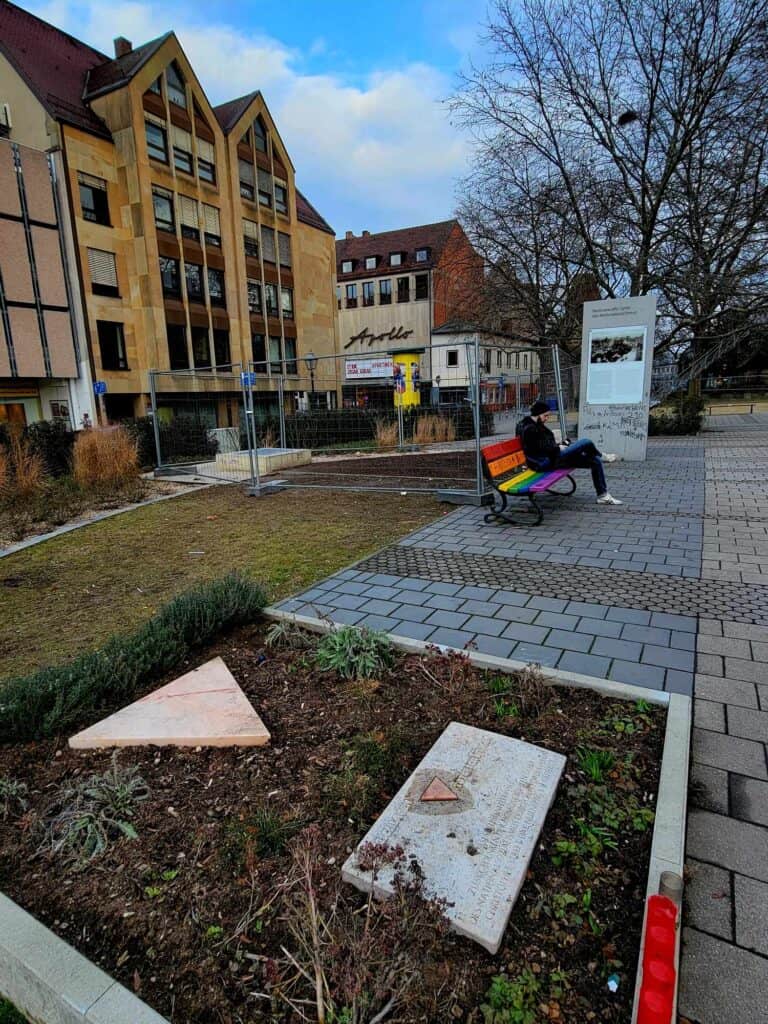
This is a sad and interesting memorial that you can find by clicking at the address link above. There are several placards near it, one of which says:
“Homosexuals from Nuremberg were also subject to persecution by the National Socialists. Before 1945, the areas between the opera house and the neighbouring main station, as well as Königstraße were places where homosexual men could make contact in Nuremberg. In their every day living and working environments, this was usually impossible, and therefore they chose supposedly secret meeting points…”
This memorial with a pink triangle, a small garden, a plaque, and a rainbow bench marks one of these areas.
“During National Socialism, over 50,000 homosexual men were sentenced… They ended up in prisons, so-called sanatoriums, or concentration camps where they were identified by a pink triangle… Female homosexuality was not a punishable offence in Germany, but women could be prosecuted under the pretence of prostitution or ‘anti-social elements.'”
At least half of those who were imprisoned did not survive. This memorial was dedicated in 2013.
22) Nuremberg Toy Museum (Spielzeugmuseum): A Historic Journey Through Childhood Toys
Karlstraße 13-15, 90403 Nürnberg
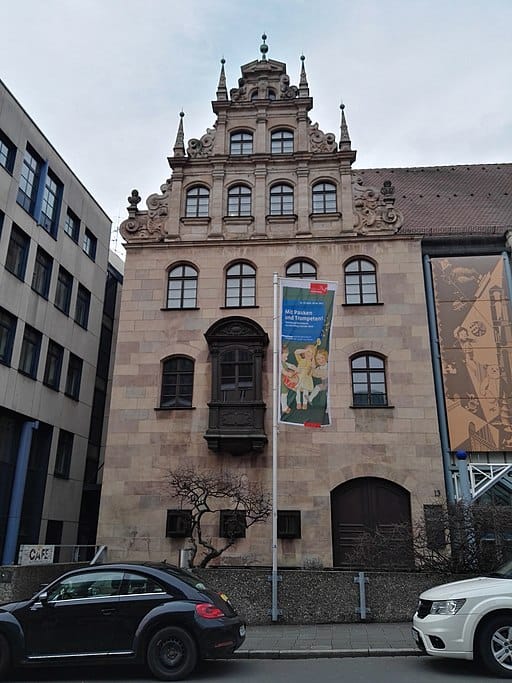
This one is top of my list next time I get to Nuremberg. I’ve heard great things about it and that it’s a fascinating museum showcasing the history of toys, with exhibits ranging from medieval dolls to modern-day action figures, reflecting the city’s historical role in toy production!
Here’s all the information to plan your visit to the Toy Museum (Spielzeugmuseum) in Nuremberg!
23) Find the Scales Relief (Waagrelief) and Other Hidden Sculptures
Winklerstraße 29, 90403 Nürnberg

The original relief carving of scales was created in 1497 by Adam Kraft (the same artist who created that incredible Tabernacle in Lorenzkirche!) The scales were an emblem of trade, and of fair compensation through the use of weights and measures.
The Waagrelief was placed on the ‘Waaggebaüde’ which was a public building where the official scales were found. Sadly that was one of the buildings which did not survive the bombing during World War II, but the original relief can still be seen in the Germanisches Nationalmuseum.
For art lovers, Nuremberg’s Old Town is filled with hidden medieval sculptures waiting to be discovered! Some are original pieces, others are reproductions, but each one feels like finding a treasure and has a story you can research, or that’s explained with signage.
24) Buy Amazing Antiques
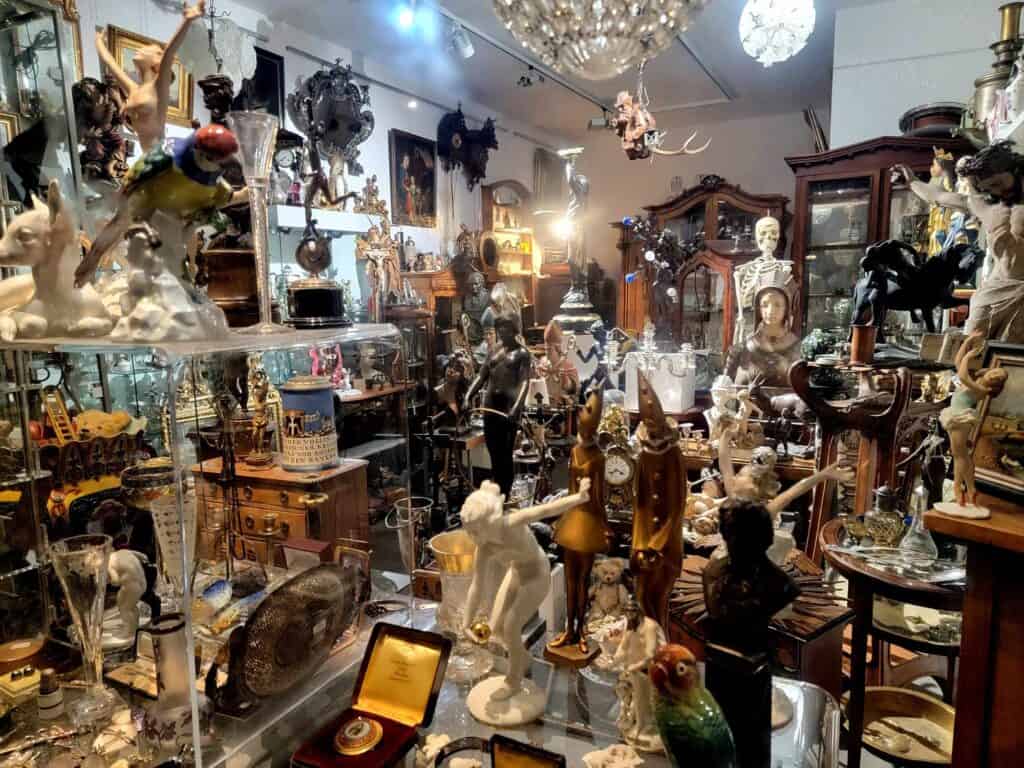
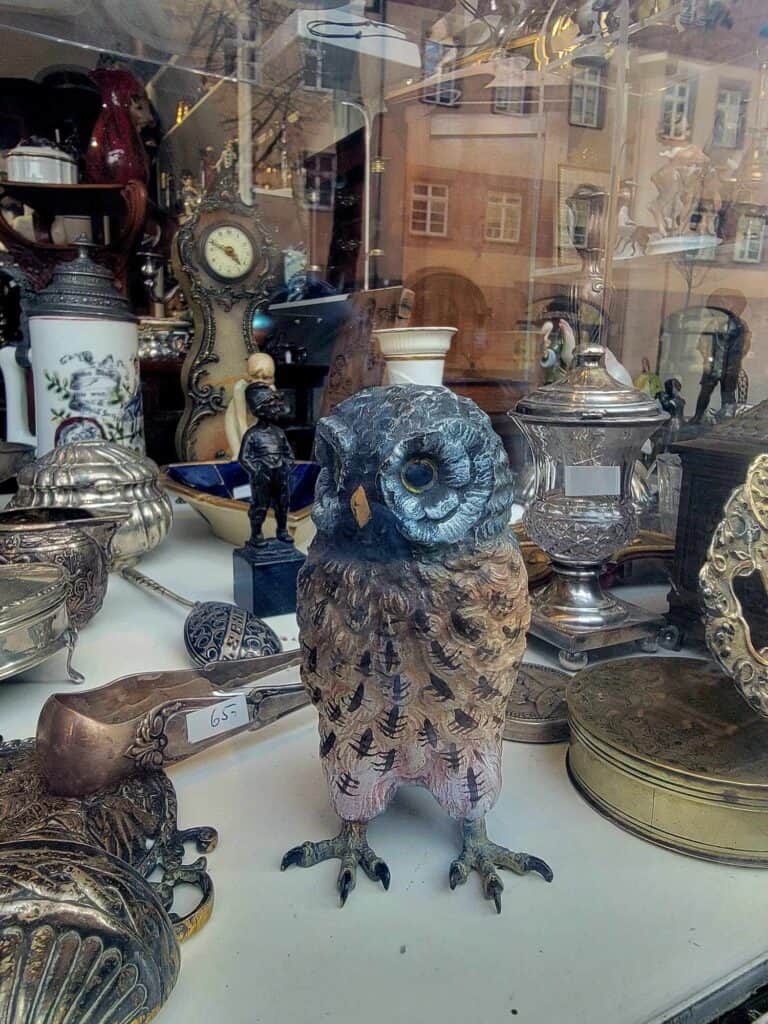
If you love antiques, buckle your seatbelt because Nuremberg delivers! I’ve picked up several things in Nuremberg over the years, and even if you don’t buy, it’s like walking through a treasure chest. We were like kids in a candy shop!
A great place to start is the area around St. Sebalduskirche, and in Albrecht-Dürer-Platz!
There are so many things to be found it’s hard not to overbuy!
But take note, most transactions will be cash only so be sure to have more than you think you’ll need so you don’t miss out on that thing you weren’t expecting to find!
25) Attend the Nuremberg Christkindlesmarkt: Germany’s Most Magical Holiday Tradition
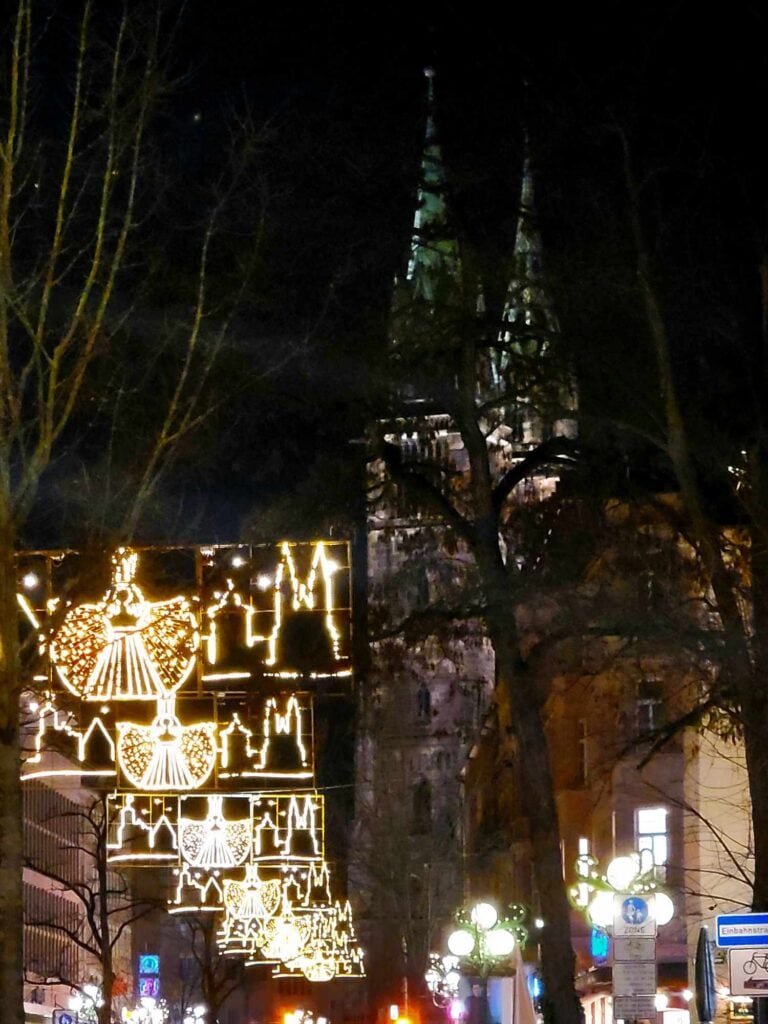
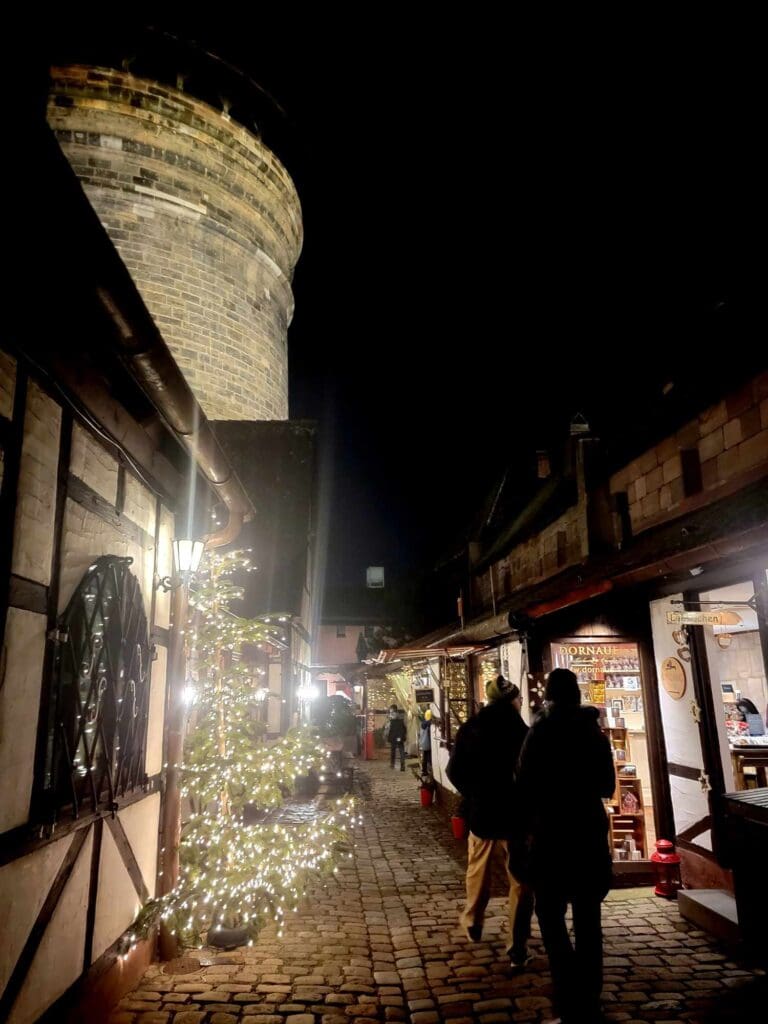
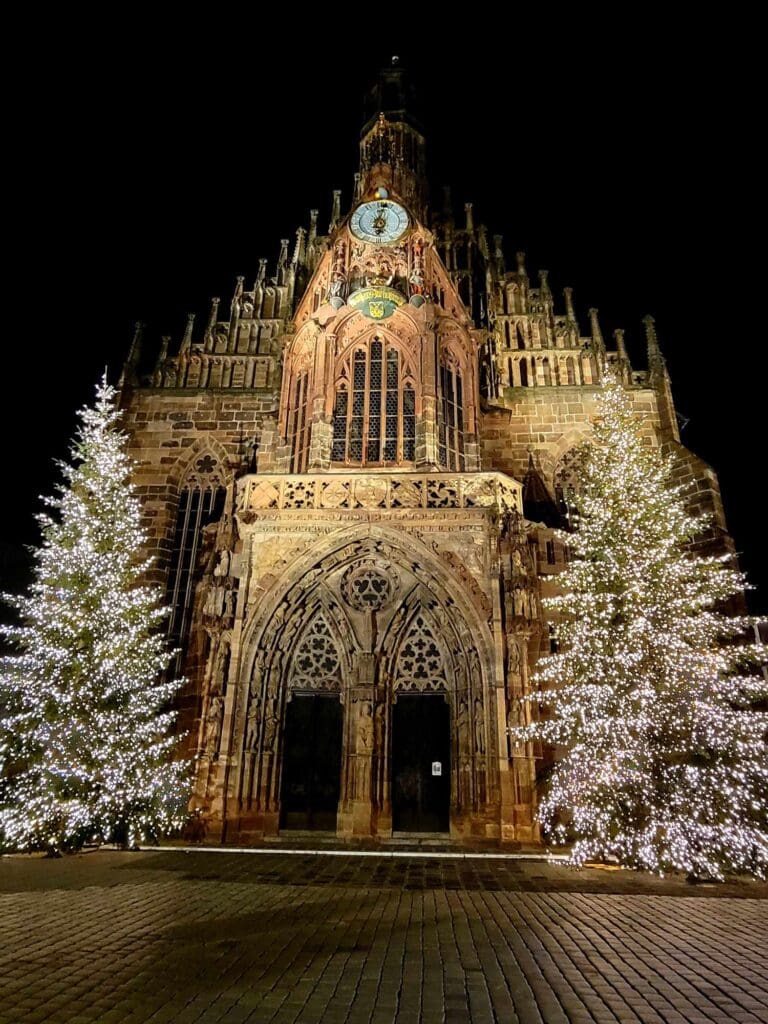
History of the Nuremberg Christmas Market
German Christmas markets are the most beloved and most visited in the world. And Nuremberg’s Christkindlesmarkt is the best of the best in the country! It (along with the market in Strasbourg, France) is one of the oldest recorded Christmas markets in the world, dating back to the 1500s!
It wasn’t mentioned in official records until 1628, but local tradition links it to an even older medieval Advent market where Nurembergers went to stock up on holiday goods before Christmas.
Today it welcomes more than 2 million visitors a year!
When and Where is the Nuremberg Christmas Market?
The market is open from the end of November until Christmas Eve, and can be found in the Hauptmarkt right in front of the Frauenkirche.
Why is the Nuremberg Christmas Market So Special?
Nuremberg really goes out of its way to create an authentic and traditional atmosphere. They take the history of the market seriously.
The city enforces strict rules to ensure that the vendors’ stalls maintain a traditional, handmade aesthetic—no plastic decorations, no commercialized kitsch. No flashing lights or loud music.
What Can You Find at the Christkindlesmarkt in Nuremberg?
You’ll find wooden stalls, tons of locally handcrafted products, and the absolute best of Franconian foods – especially the city’s prized lebkuchen (gingerbread) with a recipe dating back centuries, the famous Nuremberg sausages, spekulatius almond cookies, and of course hot steaming mulled wind (glühwein) in collectible mugs.
You’ll find handcrafted ornaments and decorations, little traditional figures made out of prunes called Zwetschgenmännle, and all kinds of gifts and decorative items.
And the city itself is absolutely magical with soft white lights, flickering candles, and illuminated star lanterns giving the whole city a warm winter glow you won’t find anywhere else. Even the landmarks are lit so as to emphasize the amazing architecture, but without being overly bright.
💡 Pro-tip: Try to hit the market during the week for fewer crowds and to really enjoy Nuremberg’s atmospheric ambiance.
How Long Should You Spend in Nuremberg?
If you’re wondering how many days to spend in Nuremberg, two to three days is ideal to cover both historic sites and hidden gems. While it’s true that you could easily just spend an unscheduled day wandering and taking photos and eating delicious food, there are so many treasures to be discovered, I’m pretty sure you’ll want to dig in and explore at least a few of these incredible sites.
See You in Nuremberg!
I hope this post has gotten you stoked for your trip to Nuremberg, and that my list of the best things to do in Nuremberg will get you started on your way! And yes, I could have kept going.
But part of the fun of exploring a new city, especially one with so much history and atmosphere, is to discover things on your own, and just get lost in the magic of the place. Nuremberg has so much to offer, I hope your schedule permits some time to explore and also time to absorb and reflect.
You May Also Like:
- Hotel Elch: Best place to stay in Nuremberg with a dog
- 10 Best Albrecht Dürer Sites in Nuremberg: A Guide to His Legacy
- The Nuremberg Art Bunker and its Dark Secrets
- Your Ultimate Guide to Visiting Nuremberg Castle: History, Tips & Must-Sees
- 17 Best Romantic Weekend Trips from Kaiserslautern
